








Megumi Kamikawa was overcome with emotion as she gently laid her chain of origami cranes at the altar for the Orlando shooting victims. Each crane was crisply folded with of bright, colorful paper to illustrate the rainbow symbol of LGBTQ+ pride, and the pieces were neatly strung together into one unit.
“I made that piece of artwork in celebration of gay marriage when marriage equality came about, and then a year later, there’s a vigil for Jump to VIGIL, page 6

 By Everett Bang, Shauli Bar-On and Skylar De Paul Mosaic Staff Writers
By Everett Bang, Shauli Bar-On and Skylar De Paul Mosaic Staff Writers
Every shade of blue, gray and green was visible as officers from all over California attended a memorial service for San Jose motorcycle Officer Michael Katherman in the SAP Center.
On the morning of June 21, officers from as far as Stockton, Fresno and Los Angeles paid their respects to the San Jose Police Department’s 13th officer to to die while on duty.
“This is the most difficult part about being a police officer,” said Capt. Anthony Ciaburro, a former San Jose cop who now works for East Bay Regional Parks District Police, outside the arena. “The ceremony was moving and honorable.”
San Jose Assistant Chief Dave Knopf opened the memorial with an address about the bond between all officers.
“Although we may wear different patches, we are bound together through service,” Knopf said. “When an officer loses his life in the line of duty, it is not just a loss for the police depart-
Katherman, 34, was fatally hit by a minivan on June 14 while riding his motorcycle at the intersection of North 10th and Horning streets in San Jose. No charges have been filed.
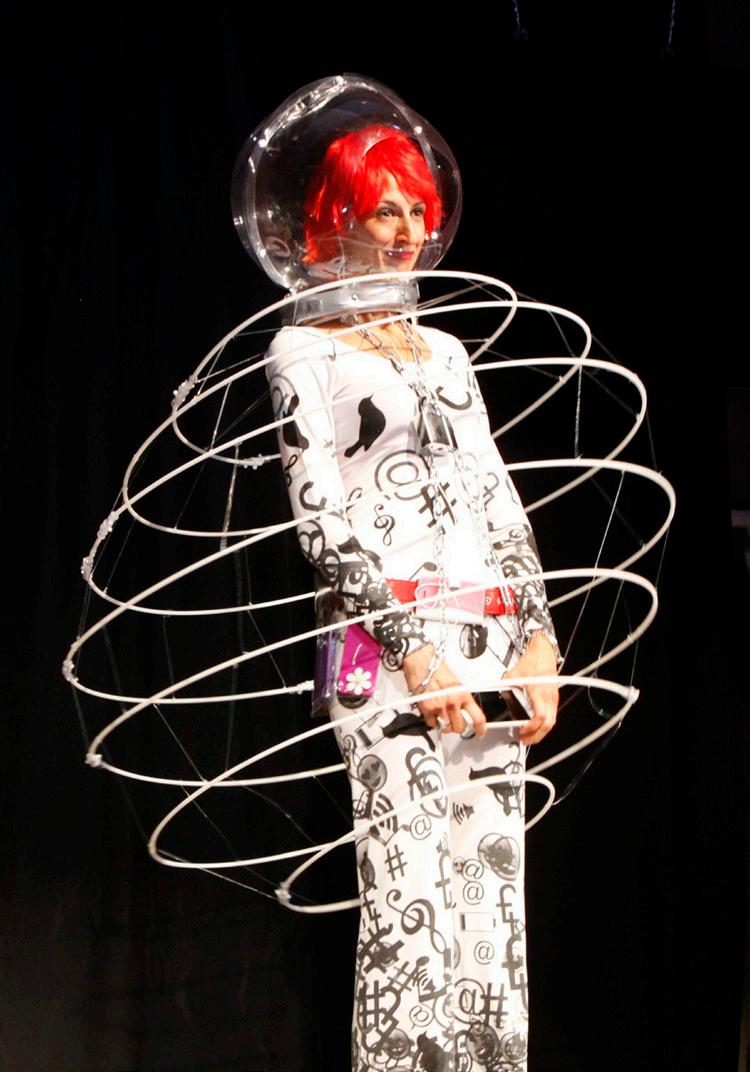
ment, but for the community as well.”
Memorials like this happen too often, Chris Monahan, father of San Jose police Lt. Chris Monahan Jr., said before the ceremony. “One is too much. They really are like a family; they take care of each other. They also hurt because they can see this happening to them.”
“Law enforcement is really like a brother or sisterhood,” Officer Chris Scott of the Berkeley Police Department said. “When one of us falls in live duty, we’re there to support the department, family and to honor their service.”
Tom Katherman, the dead
officer’s father, told the gathering about his son’s commitment to serving his community. “Mike loved putting on that uniform,” Katherman said, “and he loved those who served with him.”
In addition to Katherman’s passion for protecting his community, the officer was remembered as a humorous man and a devoted father.
Sgt. John Carr, who worked with Katherman for three years, shared Katherman’s family-man nature with the crowd. Carr often heard Katherman express his need to go home and see his family because they needed him more than the station.
“Mike means so much to me
because he represents everything I am trying to become,” Carr said.
The Jumbotrons inside the arena flashed images of Katherman’s life -- of his childhood, school experiences, wedding, kids and other life events.
“Whatever he was doing, he wanted April to be a part of it,” said San Jose Chief of Police Eddie Garcia, referring to Katherman’s wife. He went on to describe Katherman as “a hero, but not because he wears a badge, because he was a dad.”
Austin Nielsen, Katherman’s friend since their freshman year
page 8
By Sidra Rashid Mosaic Staff WriterThe show began with a model wearing little makeup and sporting a billowy white, slightly transparent dress gliding down the runway. Tiny white lights were strung throughout her brunette hair.
This dress and many other ensembles were presented at Pivot: The Art of Fashion fashion show held June 18 at the Armory in downtown San Jose.
The event was a preview for Ann and Mark’s Art Party, an art festival that began as a local housewarming party many years ago. Starting September 24, hundreds of artists — from fashion designers to poets — will present their work at the Santa Clara County Fairgrounds during the event.
The fashion show featured a variety of Bay Area designers previewing looks from their collections, from dresses
made of hair rollers and animal-cracker packaging to vibrant African prints to crowns made of gold-painted metal forks and spoons.
Rose Sellery, the co-founder of Pivot, an artist outreach program that helps bridge the gap between art and fashion, was very proud of all of the work the designers did. She referred to the designers as her “babies.”
Sellery described the inspiration behind her dress “Skin and Bones.” The tight, see-through mini dress seems to actually be made out of bones, complete with a bone choker necklace and a Marie-Antoinette-esque wig.
“I’m inspired by words. The ‘Skin and Bones’ dress was inspired by the saying, when people say ‘She looks like skin and bones.’ ” she said. “I like having a play on words, and twisting phrases to make a new meaning out of it.”
Santa Cruz-based designer Mariclare McKnight showed

AJ DE LAS ALAS
Although she grew up in Fremont, AJ is definitely someone out of this world. Her favorite meal to start off the day is a bowl of Hot Cheetos with cream cheese. However, AJ is also a picky eater, which can one day make her a great food critic. She also gets sleepy very often and even fell asleep during one of Joe’s story times. AJ is an upcoming senior at American High School. At school, AJ spends time helping organize her school’s prom. Next year AJ will be captain of her school’s Mock Trial team and editor-in-chief of her school’s newspaper, The Eagle Era. She excels at track even though she’s super lazy.

ANAIS AYALAMARTINEZ
Anais Ayala grew up in San Jose as the oldest of three children. She is going into her junior year of high school at Cristo Rey, a small religious private school. It was there she developed a passion for photography, which led her to joining the school photography club and get heavily involved in her school’s yearbook production. Anais likes eating Takis, watching Netflix, and cats. She has a good sense of humor, and is mellow and good natured. Anais is sweet to everybody, and although she can be soft spoken at first, she is entertaining and outgoing when she is comfortable.

AVNI PRASAD
Avni Prasad lives in Cupertino and will be a senior at Monta Vista High School. She is a hardworking 17-yearold girl who knows what she wants and how to manage her time wisely. She is also a kind and sweet person when you get to know her. From going out to lunch to talking in a group, she finds a way to include everyone. She has a big heart when it comes to friends and family. Avni is a very passionate writer who wants to succeed. She tries her best to make her work the best it can be and does not give up when she gets stuck in a problem with her story.

ELIZABETH LOPEZ
Elizabeth Michelle Lopez is a rising senior at Alisal High and was born and raised in Salinas. She has aspirations of traveling around the world learning about different cultures. She is vegetarian, but not judgmental toward meat lovers. She has a quiet voice, but her values and what she stands for speak loudly. She wants to study botany because she believes plants can cure anything. She has a bunny named Bell that she loves feeding Nature Valley Bars. She is very family oriented. She loves to hula hoop.

EMILY LUONG Standing at 4’11,” Emily Hong Van Luong’s outgoing and bubbly personality exceed her height by miles. As an up and coming senior at Evergreen Valley High School, Emily is a very studious person who excels in her education by taking difficult classes. She derived her interest in journalism from editing her friend’s English paper because she says she enjoys taking people’s creative work and making it better. For college, she hopes to attend UCLA and major in history or communications. Outside of journalism, Emily enjoys watching makeup tutorials on YouTube, creating her own looks, and even offering her makeup skills to other people for prom or special events. By looking at her, you would never guess that Emily loves to speak Spanish and speaks it with no trace of an American accent.
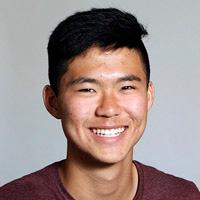
EVERETT BANG
Everett Bang is 16, Korean, and an upcoming junior at Pioneer. He can take broad ideas and condense it into a direct, short-but-sweet package for others to understand better. He randomly dances, whistles and sings even with no music, makes sure people get to places on time, is honest, and is considerate of what others may feel. He’s quick to joke around or work hard whenever the time comes. If you want to think deeper and expand your mind, Everett’s the person to be around.
HECTOR CASTAÑEDA

Héctor Castañeda is a rising 17 year old senior who attends Downtown College Preparatory Alum Rock and enjoys music of all kinds but especially alternative, pop, funk, experimental, and cultural music in that order specifically. If he were a presidential candidate, Héctor would have approval ratings soaring through the roof with the present Mosaic class. He lives a vegetarian lifestyle, but always jumps at a chance to eat vegan. Héctor joined Mosaic for an opportunity to interact with the community around him and ask the tough questions with a focus on showing the uncommon perspective. Héctor’s unique ability to find humor in anything brings a light atmosphere to the entire class. It’s easy to spot Héctor with his vest, turtle necklace, and pendant with his room key attached, which makes it really difficult to open the door.
LAURYN LUESCHER

Spunky, humorous and friendly are all adjectives that describe Lauryn Luescher. She is a 16-year-old girl who has gone through a lot but doesn’t let it define her. Lauryn first became interested in journalism by her freshman English teacher: Shannon Giovannoil. In the future, Lauren wants to aspire to be a journalist, and would love to attend college somewhere in California. Lauren has a good work ethic and always uses her time wisely. Everybody needs a Lauren Luescher in their life, and when you find one you’re going to be happy around her 24-7.

MAYA MORNING-SUN
DIAZ
Maya Morning Sun Diaz, who is a senior at Downtown College
Prep, may be the sweetest person on the planet — walking proof that liking shoes, makeup, and clothes doesn’t automatically make a person shallow and selfish. She may love shopping and materialistic items, but she also loves writing and learning, which inspired her to pursue journalism and apply to Mosaic. Maya loves oldies and plays them in the morning, putting everyone in an oddly good mood even though we’re tired and should logically be cranky. Her ability to empathize with others endears her to all, making her a good friend and great journalist.
MITCHELL LAI

Mitchell Lai is a rising junior at Bellarmine College Preparatory. He is an avid speaker and writer who competes on Bellarmine’s speech team and is a reporter on the student newspaper. Mitchell enjoys swimming and playing on his school’s water polo team. Although shy at first, Mitchell is incredibly open once the ice is broken. He is also a passionate magician who is talented in handling cards and performing tricks. Mitchell enjoys watching stand-up comedy regularly and coming up with jokes of his own. He also loves experimenting with food and is never afraid to try something new. Despite previous bad experiences with restaurants, he will give the place a second chance to impress.

SHAULI BAR-ON
Shauli Bar-On is a rising senior at Homestead High School and serves as the president for the mock-trial team while writing a weekly column for his school newspaper as editor-in-chief. During his free time, he enjoys playing the guitar. His favorite band is Green Day. He played on his school soccer team as a freshman and continues to be an avid soccer fan himself. Born in Israel, Shauli moved to San Diego when he was 3 years old, then the Bay Area. In high school, Shauli joined his school’s journalism program as a mistake, but proceeded to fall in love with writing and covering news.

SHEYENNE ROWEL
Sheyenne Rowel is the best roommate anyone could have. She respects your space and will have you laughing all day long. Even though she is shy, once you get to meet her she’s the funniest person you will ever meet. She loves to write poems and is very proud of her culture. Born and raised in San Francisco, she knows the struggles of everyday life and it inspires her to write. She is not your normal teenager, she is very spiritual and unique. She’s had all the girls laughing at her jokes and everyone enjoys her company. #shynotsoshy
SIDRA RASHID

Sidra Rashid is the “mom” of Mosaic and the resident Liberal-in-Chief. She loves Bernie Sanders, has very passionate opinions, and is a strong advocate of social justice for all. Her family originally hails from Pakistan. She has a big heart and an open mind that graces the presence of everyone she meets. She’s quiet at first, but if you get to know her, she’s one of the most mature and informed teenagers you can find. Plus, she has really cool music taste. Sidra came from Summit Rainier High School and will be attending UCLA in the fall for International Developing Countries Studies.
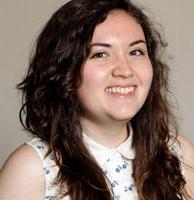
SKYLAR DE PAUL
Skylar De Paul’s love for words and learning was predicted before she was even born: education was of big importance to her parents, so they dubbed her the Dutch name Skylar, meaning “scholar.” Growing up, she was always wanting to learn and was willing to try everything from tap dancing to gymnastics to taekwondo. Living in a small town like Vacaville was fun for Skylar because she was able to become really close to a lot of people in her community. However, she also feels that not a lot of events happen where she lives, unlike big cities. As someone who has always loved humanities, she has decided to pursue journalism, though her parents took a while to warm up to the idea.

SOPHIE PENN
Sophie is a 16 year old junior-to-be from Carlmont High. For college she wants to go to Oregon State and study communications. She likes going to beach parties and hanging out with her friends. She lives in Belmont, a small town in San Mateo County. Sophie is a photojournalist but is deeply interested in video journalism. She gets really excited whenever she takes videos because she can’t wait to edit them and put them together. She also likes braids but she does not know how to make them. When the staff has some free time in the dorms, she is either in her room texting her boyfriend, or in the common room hanging out with everyone.

SUNNY GANDOTRA
Sunny Gandotra is an upcoming senior at Santa Clara High School and is one of the smartest, funniest, and prettiest girls I’ve ever met. The colorful clothing she sports every day matches her colorful personality. One of the most interesting things about her is that she’s half Mexican and half Indian. In school, she participates in Santa Clara High’s journalism, debate, DECA, and theater programs. Sunny enjoys drinking coffee, singing along to Drake songs, and taking selfies for her Snapchat stories. When you see her, she’s usually checking the latest tweets or brainstorming her next Instagram caption. Sunny can laugh at almost anything, and her laugh is contagious.

SYDNEY WELCH
Sydney Welch is a photographer and learned everything she knows from her mom, who is obsessed with capturing every moment. Sydney lives in Fremont and is going to be a senior at Irvington High School. She is one of the craziest, most outgoing, and funniest people ever. Sydney is a concert goer and goes to at least two concerts a month. You’ll know when Sydney is close because she is always playing music, whether it be Bay Area artists or Hannah Montana. She is a big fan of napping and when she sleeps, she is out cold.

WFAH AFANEH
Wfah Afaneh is a rising senior at Kipp King High School in San Lorenzo. She has lived in San Leandro most of her life. Always carrying a smile, Wfah always joked around with students and mentors. During discussions, she asks the questions that were on everyone’s minds but were too afraid to ask. The common thread that runs through all of her stories is passion — experiences, her background, her interests fuel her stories. Mental health is an issue she feels personally invested in. In her free time, Wfah obsesses over Kevin Hart or scrolls through BuzzFeed. Whether it is in a classroom or at home or in the newsroom, Wfah always challenges what she hears. She is a critical thinker and a valuable addition to the newsroom.

MOSAIC PROFESSIONAL STAFF
Executive Director
Director Emeritus
Managing Editors Claudia Meléndez
Robert Salonga Chuck Carroll
Photo Editor
Karl Mondon
Design
Reynolds
Copy Editors
Sharon Noguchi Patty Hannon
Editoral Assistants
Calyse Tobias Imran Najam
Creo Noveno
Guest Advisers
MONTEREY HERALD
Publisher
Executive
SJSU
San Jose Mercury News
Area News Group San Jose State University
Monterey Herald
Dow Jones News Fund
CCNMA Latino Journalists of California
Brandenburg Family Foundation
“What you have to say is really important. You have to realize how powerful you already are.”
This is part of the message that Héctor Tobar, Pulitzer Prize-winning journalist and New York Times bestselling novelist, gave to high school reporters in a talk during the two-week Mosaic Summer Journalism Workshop on June 16 at the San Jose State University campus.
Tobar, 53, offered his wisdom to this class of aspiring journalists. He encouraged them to constantly learn and see the power in truth.
“As smart as you are, it’s really important to get a good education,” Tobar said. “There’s a very strong anti-intellectual streak in American culture.”
Héctor began his journalistic career at the age of 15 in the midst of a high school newsroom, where he was published and read for the first time in his life -- much like several of the Mosaic students in his audience.
“Writing made me powerful,” he said. “The things I’ve had to overcome have made me powerful.”
Mosaic reporters and editors alike had questions for Tobar regarding his work in the journalistic field, as well as advice for their own projects and aspirations.
“The more ordinary the story is, the better the writing needs to be,” was one lesson Tobar lent to the open-eared note-takers. “Lose yourself in every detail. I want to be in the stadium, and I want to smell the hot dog.

“It’s not just the story that’s important,” Tobar added later. “What’s also important is the kind of person you were and how your story made somebody feel about themselves.
By Avni Prasad Mosaic Staff WriterDon’t have sex.
Don’t drink.
Don’t do drugs.
These are familiar prohibitions taught at middle schools, and most students obediently follow them. But when those students roll into high school, they become less disapproving of marijuana use, with more of them crossing it off the list of taboos.
This year, the Adult Use of Marijuana Act, which would legalize marijuana, gained enough signatures to be placed on the November ballot in California. With the rising popularity of cannabis, several states have legalized the drug while others debate following suit.
“The public policy in respect to marijuana is largely out of sync with the public sentiment,” said Paul Armentano, deputy director of the National Organization for the Reform of Marijuana Laws.
According to the independent Public Policy Institute of California, 55 percent of likely voters in the state support legalization of marijuana, a rate that’s only a little higher than it was in 2010.
Marijuana is classified by the federal government as a Schedule I substance, which suggests that the safety risk and harm associated with cannabis use are equal to use of harder drugs like heroin and LSD. That’s absurd, legalization advocates say.
“The potential risks to the individual user or to society as a whole posed by cannabis do not warrant its classification as Schedule I substance, nor does it warrant the stigmatization and criminalization of an adult who chooses to use the substance responsibly,” Armentano said.
In California, marijuana is legal for medicinal use only, and possession of small amounts has been decriminalized. The November initiative advocates for full legalization for adults and regulation of marijuana cultivation and sales. Accord-
“I feel really good that a lot of times I wrote stories about people who had never been written about before, and I validated them and made them feel powerful. I made them feel important, and that’s a great feeling,” he said. In a side interview with a Mosaic reporter, Tobar awarded his final bit of advice to the next generation of storytellers.
things in life. If you stick with it, you’ll have rewards in the long run by becoming a more cultured, informed person.
“You can’t go into [journalism] expecting to make a lot of money,” Tobar said. “It’s something that you do for the love of it, and sometimes those are the best
“What journalism does is it puts you into the world. That’s worth not getting paid very much. It’s a sacrifice, but it’s a worthy one.”
ing to a recent 2015 Gallup Poll survey, 44 percent of adult Americans have tried marijuana, and about 1 in 10 Americans currently smoke pot.
“We are not talking about introducing a new drug to society or a new industry to society,” Armentano said. “We are talking about amending the laws to reflect the reality that despite 100 years of prohibition, this market, this industry, is not only here, it is prospering and proliferating.”
In 2014, researchers at the University of Michigan surveyed more than 400,000 middle school and high school students from more than 400 schools and found that the use of marijuana is almost three times higher by 12th-graders than by eighth-graders. While availability of marijuana is twice as common in 12th grade than in eighth grade, overall the students’ perceived risk of marijuana use has been in a steady decline since the 1990s.
As students transition from eighth through 12th grade, they become less disapproving of regular marijuana use, according to the report, “Monitoring the Future.”
The legalization debate is also finding its way into high school classrooms. Varun Sachdeva, a rising senior at Monta Vista High School in Cupertino, recently presented a persuasive speech on why marijuana should be legalized. After weeks of research, Sachdeva concluded that legalizing marijuana would not affect teen marijuana consumption, but it would have medical and economic advantages.
“No matter what, teens are going to get” marijuana, Sachdeva said. “Legalizing it will not change that.”
A fresh report out of Colorado indicates that legalizing weed in that state did little to change teen use of the drug.
One of five teens in the state used marijuana in the past month, but that is the same rate they used it before the drug was legalized, and roughly in line with the national average, according to the Healthy Kids Colorado Survey, released June 21. Eighty percent said they don’t use it even occasionally.
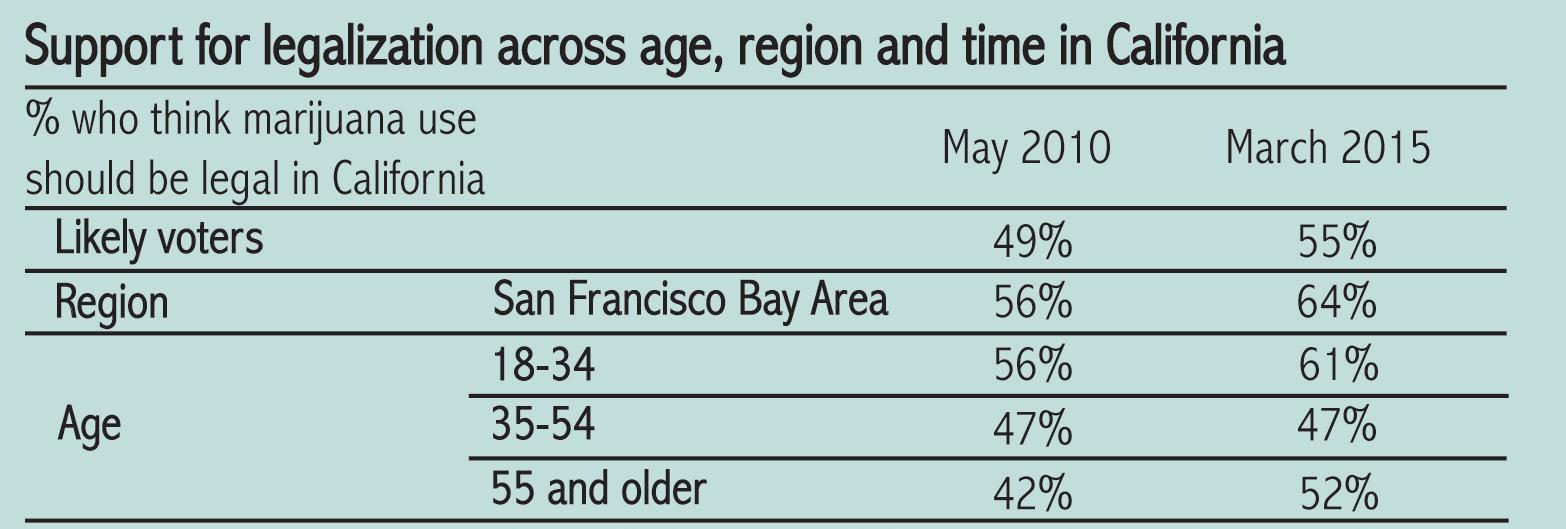

To Monta Vista graduate Itay Barylka, legalizing marijuana means more than providing medicinal benefits and raising tax revenue. It means breaking, or at least shrinking, the school-to-prison pipeline for African-Americans.
“A lot more black kids would go to college if marijuana were to be legalized,” Barylka said.
Although black and white Americans are equally likely to use marijuana, according to the American Civil Liberties Union, black users are almost four times more likely to be arrested for possession of cannabis than white users.
“It is a fundamental injustice,” Barylka said. “While black and white people use marijuana at the same rate and sell marijuana at the same rate, black incarceration of drug offenses is much much, much higher. I think that legalizing marijuana federally would prevent that from happening.”
The federal government remains opposed to legalizing marijuana, and no serious efforts have been made at that level to legalize it, but the Obama administration has taken a more lenient approach to law enforcement in states where it is legal, as long as the Justice Department believes the state is following its own laws.
Barylka acknowledges that legalizing marijuana creates potential for abuse, but
he believes the benefits far outweigh the drawbacks.
However, Karen Johnson believes the benefits of legalizing marijuana do not justify the potential harm of the drug to users. To her, marijuana is a gateway drug.
“I see marijuana used as sort of escape,” Johnson said. “I don’t respect that because a lot of people know the effects it has and they choose to do it anyways. It shows their lack of judgment and makes me lose faith in them.”
Alison Bateman, director of the Wellness Center and Alcohol and Other Drug Initiatives Program coordinator at Santa Clara University, agrees. “When people are looking for a way to escape from their problems or escape from their life, it can become a very slippery slope from occasional use to regular and daily-to-nearly-daily use,” she said.
However, to Armentano, regulation acknowledges the potential harm of marijuana use. Lt. Gov. Gavin Newsom touted his support for the legalization initiative on June 21 on Cannabis Radio News.
“Voters are getting frustrated with this debate,” he said, maintaining that pot laws are unfairly enforced against minorities and the poor. “They are frustrated with the mandatory minimum sentencing. They are frustrated with this war on drugs.”
 By Maya Morning-Sun Diaz Mosaic Staff Writer
By Maya Morning-Sun Diaz Mosaic Staff Writer
San Jose lit up on every major news station in the country the day after Donald Trump held a June 2 rally at the San Jose Convention Center, but for once, Trump was not the main topic of conversation.
Media outlets showed bloodied Trump supporters and young men and women carrying the Mexican flag or covering their faces with black bandannas. The American flag and Trump for President paraphernalia were seen going up in flames just outside of the convention center, as Trump supporters entered and exited the event.
Latinos, because they are the fastest-growing ethnic group in the United

States, have the power to decide the next president, but with Trump’s constant criminalization of Mexican-American communities, the frustrations of many Latinos in San Jose had reached their limits. Multiple cases of physical violence were documented at the rally. Supporters of the presumptive Republican nominee were shown leaving the rally with bruises, torn shirts, stolen hats, and even a broken nose. Attendees of the rally were outraged. For Jan Soule, the insufficient police protection at the Trump rally exemplified a lack of respect for Trump supporters.
“Donald Trump has his First Amendment rights, his freedom of speech,” said Soule, president of the Silicon Valley Association of Republican Women. “And to see these people bloodied by protesters, it means that I, as a Republican supporter of Trump, am an unprotected minority.”
To many San Jose youth and those in the Latino community, the violence may have represented a manifestation of anger that stemmed from racist remarks on which critics say Trump has built his
campaign. They are disheartened that his message has resonated with so many.
“They were yelling, ‘Build a wall,’ and people had shirts that said ‘Build a wall,’ ” said 17-year-old Jose Moreno who attended the rally with a couple of friends.
Moreno grew up in a household of two immigrant parents who came to the United States over 20 years ago. Like many immigrants, his parents left their homeland, families and their past lives in order to provide better job and educational opportunities for their future children.
The move was difficult for his parents, and as a young Mexican-American man, Moreno said he has faced discrimination because of how he looks.
“Cops just see a group of blacks and Latinos and automatically think there’s something going on,” he said.
“To me, ‘build a wall’ is like saying I’m not wanted here, and Trump is trying to separate two different people. That’s why people got violent, because saying stuff like that is offending,” Moreno said.
One of his friends was involved in an altercation at the rally. Moreno says his friend was hit by a Trump supporter first
but that it was his friend’s punch that was caught on camera. This video spread on social media and went viral, leading to his arrest.
The media, he said, “was all in favor of the Trump supporters and they made us look violent. We were called thugs and savages, but it wasn’t reported that my friend was hit first.”
Even so, he acknowledged that some of the violence stemmed more from anger and adrenaline than from altruistic motives.
“People went to mess things up, that was their intention,” Moreno said. “For the Latino community especially, it does make us look bad because they didn’t even care what was going on, like about the rally. I know what they did wasn’t right.”
But he stressed that the violence does not reflect the majority of the Latino community, or San Jose youth.
”There were just as many, if not more people who attended the Trump rally to protest peacefully, but their stories weren’t on the news.”
First-time voters find decisions tough to makeBy Sidra Rashid Mosaic Staff Writer
When 19-year-old Kelli Varich was posed with the question, “Who are you voting for?” her response was, “At this point, I’m not sure.”
As a registered Republican who doesn’t agree with Donald Trump, she is unsure of how to make a decision that will make her happy.
Varich’s perplexity in finding a candidate to support is a sentiment that has resonated with first-time voters in California during this election season.
Jordin Holston, an incoming student at San Francisco State University, has covered her bag with “Feel the Bern” pins. Her cellphone wallpaper is a picture of her with friends at a Bernie Sanders rally. She discussed her passion for the progressive candidate, explaining, “He cares about me as a black female, and he cares about others as individuals.”
With the Sanders campaign looking like it will end in a loss at the Democratic Convention, devoted supporters like Holston are begrudgingly moving their support to Hillary Clinton.
When asked if she was planning to transfer her vote to Clinton, her response was, “Unfortunately, yes.”
She believes Clinton is untrustworthy because of all of the times she changed her public stance on issues, including her stance on gay marriage and her opinions on the Black Lives Matter campaign.
Though she said she believes Clinton is a hypocrite, she also recognizes her dislike for the Republican candidate is greater than her dislike of the presumptive Democratic nominee.
“Donald Trump has said racist, sexist, and homophobic things,” she said. “Peo-
“Even if both options are evil, it’s still important to have the lesser of two evils.”
— Jordan Holston, SFSU student
ple say they won’t vote for Hillary because she’s fake. But would you rather have someone fake or someone that wants to deport you? Even if both options are evil, it’s still important to have the lesser of two evils.”
Similarly, Ziyaad Qureshi, an incoming freshman at UCLA, voted for Sanders because of the Vermont senator’s acceptance of every person. “He’s inclusive of everyone — all religions, all races, all genders,” he said. “He is also fighting for free college education and wants to combat climate change.”
Qureshi was passionate about voting in the California primary because he said he’d been waiting 18 years to exercise his newfound rights. One of his biggest motivations, however, is stopping Trump from winning office. He is willing to vote for Clinton to achieve that goal.
“I kind of feel like I have to vote for her, but compared to Trump, it’s a no brainer,” Qureshi said. “Even a bad candidate would look like the best person in world when compared to Trump.”
Although he doubts he will actively campaign for Clinton, he said, “I might post on social media to get less Trump votes and more for Hillary. Otherwise, I’m just going to vote in November.”
Varich, a student at Arizona State University, is having the opposite problem. After hearing Trump ridicule disabled reporter Serge Kovaleski, and learning the candidate’s opinions on immigration, she decided her ideals didn’t align with those of her party’s presumptive nominee.
Because she considers herself a liberal
Republican, she’s considering casting her vote for Clinton. She’s still not 100 percent convinced.
“My issue with her is the investigations around her,” she explained, referring to Benghazi and her email scandal.
“She’s been in office before, but she really messed with what’s right and wrong, and I don’t know what she could get away with.”
She agrees with Clinton on a few social issues, including gay marriage and abortion. She knows that voting for Clinton would be controversial in her family.
“My dad is very anti-Hillary, but my mom at the same time understands that I don’t like Trump, and she doesn’t like Trump.”
Right now, her father is planning on voting for the Republican candidate. “I don’t think that would have been his original choice, and I think that’s probably true of a lot of Republicans.”
This is true of Joseph B., a conservative Republican who is struggling with whether to vote for Trump in November. Joseph withheld his full name because a previous interview he participated in with Fox News led him to receive a lot of flak from viewers.
He started off the election season supporting Austin Peters of the Libertarian Party and Republican Scott Walker, neither of whom is still in the race. So who did he vote for instead?
“In the primaries, I voted for my AP Government teacher,” the Fremont resident said.
While he was against Clinton because
he believes she’s not trustworthy, he went on to say, “I also don’t really like Trump. I don’t think that he is the conservative that I’d like to see on the Republican ticket. I agree when he says we need to fix our immigration system. I don’t agree with his methods. I don’t think we can build a hundred foot wall and raise it five times every time someone upsets you.”
Joseph said his strong political views have caused him to be troubled about the state of his party.
“I would not mind if the GOP nominated someone else,” he said. “But at the same time, you have to understand that if he wins fair and square, we’re not gonna cheat him out of it. That just makes me question where I Iie versus where the party stands.”
Many young voters suggested that high school classrooms should take a primary role in educating students on candidates and the voting process.
Holston recalled her first vote in the primaries.
“The only reason I filled out the form correctly is because I went to vote with my AP government teacher, Mr. Quezada” she said. “Without him, my ballot would probably have been all wrong.”
Voting is something all these first-time voters find valuable. Many are sure more of their peers would vote too, if only they knew how.
They all had a same message for 18-year-olds who aren’t interested in voting — that their opinion matters. The decision they make about whether to vote, and whom they vote for, will make a difference in the United States.
“I’m a little nervous, actually, because I don’t know who I’m gonna vote for,” Varich said. “So I’ve got to spend some time thinking about the issues and my own opinions.”
As they held their flags high and proud and showed off their teams’ jerseys, San Jose’s Copa América fans were in the throes of soccer fever, with boisterous energy and patriotic fervor.
With the adrenaline, however, came the dark side of fun, as many fans chanted homophobic slurs despite the slaughter of 49 patrons and the wounding of 53 inside a gay nightclub in Orlando just days before kickoff.
Celebrating its 100th anniversary, the Copa America soccer tournament this year was hosted in cities across the United States. from June 3-26 — in Chicago, Pasadena, Philadelphia, Seattle and in the Bay Area’s own Santa Clara, home of Levi’s Stadium.
Levi’s hosted four matches, including the tournament’s kick-off match, Colombia vs. United States, and the Mexico vs. Chile quarterfinal match.
About 33 percent of San Jose’s population identify as Hispanic, according to the U.S. Census Bureau, 83 percent of those of Mexican descent. Fans of El Tri, as the Mexican national team is known, flocked to Levi’s to see their heroes as kickoff approached.
Soccer is an important force for good in the Latino community, said Hernan Diaz, who teaches Spanish III and AP Spanish courses at San Jose’s Evergreen High School, where Hispanics make up 20 percent of the student population.
Diaz has seen soccer motivate Latino students to do better in school in order to be eligible to play for their school’s team. He said many kids are drawn to the sport because you don’t have to be tall or buff or own a lot of expensive equipment.
Fans of the sport in San Jose’s Mexican culture, like Oscar Murillo, who spent a significant time growing up in Guadalajara, Mexico, hoped to see Mexico win the cup for the people (though the team lost 7-0).
“People say that against big teams Mexico doesn’t show their full potential,” Murillo said before the rout, “but they have the chance to win this cup.”
Not all aspects of soccer’s influence are

“It’s something that doesn’t personally bother me, but there are things you can’t control and you have to adapt.”
— Hector Herrera, Mexican player
positive. For instance, in a match featuring Mexico, when the rival team’s goalkeeper prepares to take a goal kick, Mexican fans are often heard chanting homophobic slurs like “Ehhh … puto!”
The word directly translates to “faggot,” but it can also be used as a less pointed insult like “coward” or “fool.” Regardless, the words contain homophobic overtones.
“The fans do it because they feel like they’re in a ‘fiesta futbolistica.’ When there’s a goal, their manner to express joy is to shout,” said Oscar Ramirez, a cameraman for Mexican TV network Televisa.
But, with the recent massacre in Orlando where the LGBTQ+ community was attacked, the chants may have cut a little deeper than they might otherwise have.
During the game June 18 game at Levi’s, numerous Mexican fans rallied up the crowd chanting the slur hours before

“They are things that have been going on for quite some time until hopefully they are better for people who are bothered.”— Francisco Silva, Chilean player
the match started, despite the lesbian, gay, bisexual, transgender, and queer flag standing on the stadium’s top.
“It’s just a Mexican tradition,” said Mexican fan Pedro Velazquez, who was one out of many fans who joked about the chant’s origin, claiming the word “puto” they chanted was just a Filipino food dish.
According to Mexican sport website Mediotiempo, the chant began in the ’80s where fans of the team Potros in Monterrey would scream ‘‘ehh... Pum’ at kickoff. ‘Pum’ was later replaced by ‘puto’ in Guadalajara during the Olympic qualifiers.
Mexican fans aren’t the only ones guilty of such foul acts. Chile was penalized for four incidents in the 2018 World Cup qualifying games, and Argentina, Uruguay, Peru, and Mexico were each fined for similar cases of “discriminatory” chanting in individual games.
“It started as a Mexican soccer tradi-
tion, but then other Latin American countries like Columbia adopted the chant. The World Cup in Brazil was really where the chant globalized,” Mediotiempo journalist Juan Martin Montes said.
The issue has been brought up several times this past year, which led to Mexico’s soccer federation including in the national team’s recent campaign “Ya párale” which means “stop now” -- aiming to put an end to these chants.
However, many fans don’t believe the chants are intended to offend anyone.
“It’s like how African-Americans that use the ‘n’ word,” Murillo said. “In some ways we unharm the word, and we don’t really say it to insult that type of community.”
Francisco Silva, defensive midfielder of Chile, said he hopes it changes for those hurt by the chants.
“They are things that have been going on for quite some time until hopefully they are better for people who are bothered,” Silva said in Spanish at a news conference in San Jose.
Mexican midfielder Hector Herrera would like the chants to stop but believes them unlikely to fade away soon because of the long tradition of using them.
“It’s something that doesn’t personally bother me, but there are things you can’t control and you have to adapt,” he said in Spanish at a different news conference.
However, teacher Diaz also does not foresee and end to the use of pejorative words just because of a single event, no matter how tragic that event may be.
It is difficult to change a cultural norm, especially if you are not exposed to anything different, he said. He believes that, culturally, Latin American countries are quite homophobic and sexist, which lies in the roots of religion.
“When you are immersed in a culture, you are not going to really question a behavior because it is so much easier to go with the flow,” he said. “Many times, you will not even be able to recognize that the behavior is wrong because no one questions it.”




VIGIL, from page 1
the LGBTQ+ community,” Kamikawi said, fighting back tears. “It’s really hard to handle.”
Kamikawa used the artwork as an offering at the San Jose State University campus vigil for the Orlando shooting victims on June 16. The vigil took place by the SJSU Peace Pole and was organized by MEChA de SJSU Co-Chair Martin Madrigal and PRIDE Center Director Bonnie Sugiyama.
About 80 people came to support the event, some in groups of friends, some alone.
“The fact that people came just makes me happy,” said Veena Velury, who showed up with a friend. “I like being with groups of people and being in the presence of others.”
In the beginning, attendees conversed quietly with one another. The chatter disappeared as the crowd focused their attention on the fallen victims. Forty-nine people died in the June 12 attack on Orlando, Florida’s Pulse nightclub, and 53 were wounded.
Although the incident occurred on the opposite side of the country, members of the San Jose community said they were crushed by the shooting.
“I was shocked and horrified because a majority of the LGBT community already have to face so much oppression,” Velury said. “I think they deserve it way less than me, and it automatically came into my brain: Why wasn’t it me?”
As the evening drew on, Madrigal and Sugiyama distributed candles to the attendees and commenced the program with short speeches. Madrigal addressed the motives and behavior of the Orlando shooter, stressing how his actions “began with a burning question: Why not confront your own insecurity of identity when you condemn others and make them live in fear?”

Sugiyama’s brief message focused on the power of the community and encouraged the attendees to “reflect on the tragedy and light up the evening with love.”
Madrigal offered the mic to any volunteer speakers to share a story or message with the group. Ai Nakamura stepped up, standing out in the sea of dark-clothed people by wearing a bright rainbow cape around her neck. The billowing cape skimmed the ground. Her speech centered on the meaning of her outfit — an outfit she had been wearing the whole week.
“I’ve hidden my colors for much too long of my life, and I’m not about to let one person make me hide them again. That’s the reason I’m wearing them right now,” Nakamura said. “There is a quieter voice out there who needs to see me and who needs to see this. I wear it for everyone who can’t wear or are afraid of their colors. I will make myself the metaphorical target for every person who mocks me.”
After the speeches, event organizers passed around lighters for the candles. Each attendee held a candle in silence as Madrigal read aloud the names of the 49 victims. Several people shed tears during this emotional time of the program.
By this time, the sky had darkened and the environment was solely illuminated by the candles’ bright flames. The darkness only enhanced the solemnity of the event.
The program concluded with a unity clap. The crowd began to clap at a slow, steady pace that gradually escalated into a faster beat. Attendees chanted “Queer power” and “Isang Bagsak,” which translates to “one rise, one fall” in Tagalog.
The vigil provided an atmosphere for mourners to heal and cope with other individuals in the community.
“Closure is really important for me right now,” Velury said. “The fact that I went out to something like this, I feel spiritually better.”
The vigil also demonstrated the power of the LGBT community as it responds to the tragic incident.
“By us coming outside, outdoors, in the public, in the open to events like this, it makes a very visible mark,” Nakamura said. “This sends a very loud signal saying we can stand together and that there is strength in numbers.”
The PRIDE Center plans to honor the shooting victims in future events, allowing the community to stay involved with the Orlando incident.
“We plan on hosting more activities during LGBT history month in October,” PRIDE Center Director Sugiyama said. “We’ll probably partner with MEChA de SJSU during Día De Los Muertos and make an altar for those who have passed in Orlando.”

“This sends a very loud signal saying we can stand together and that there is strength in numbers.”
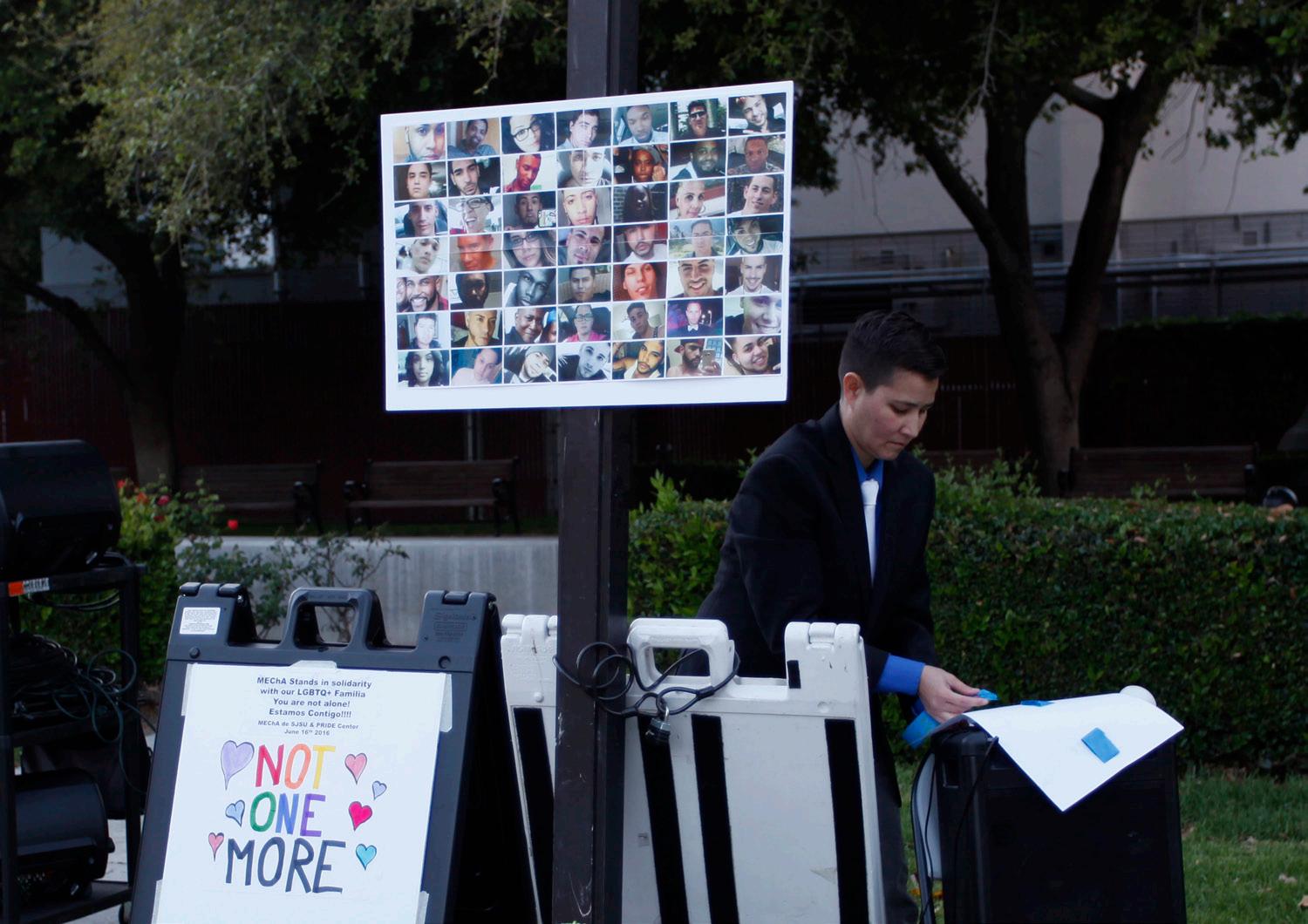
Phaedra Marriott-Olsen, 22, and her friends were completely sober driving home in a caravan from a concert in Morgan Hill County, Missouri, in 1996. A drunken driver with a blood alcohol concentration of 0.08 sped through the intersection.
Marriott-Olsen’s friends in the car ahead of hers had time to swerve out of the way, but she was hit head on.
The crash left her in a coma for three weeks, on life support for almost six. Doctors had to amputate her legs.
Marriott-Olsen will use a wheelchair for the rest of her life. The driver was convicted and sentenced to seven years in prison.
The accident, she said, “affected everything about my life. It affected me emotionally, it affected me spiritually, it affected me physically, and it changed every single aspect of my life.”
Marriott-Olsen now spends her time giving back to others, trying to prevent life-threatening injuries and deaths from drunken driving. She works with Mothers Against Drunk Driving as a motivational speaker to teens.
Marriott-Olsen said, “I’m a firm believer in education. I think we can educate teens today about keeping themselves safe and keeping themselves alive and making good decisions by saying no to alcohol.”
According to the Foundation for Advancing Alcohol Responsibility, in 2014 there were 108 alcohol-impaired driving fatalities involving minors in California. That same year, 526 minors were convicted of driving under the influence and 1,548 people were found guilty of underage drinking.
Minors are given a probation officer for support, but if they do not comply with their assignments, they are placed in formal probation.
In order to steer teens on the right path, Santa Clara County juvenile justice system Judge Katherine Lucero feels that probation officers and families need to be present throughout the process of dealing with teenage DUIs.
“I feel like the family is working to make the youth accountable and take them to all their programs,” Lucero said. “Families should talk about substance abuse. Maybe if there is a drinking culture in the family, they’re addressing that.”
Impact Teen Drivers is a company that works to prevent crashes. It makes evidence-based presentations at schools and businesses, showcasing true stories of teens killed in DUI incidents.
The company’s education outreach
When teens are convicted of driving under the influence for the first time, they receive six months without wardship. This gives them the opportunity to attend sober support groups or drinking and driving awareness classes, as ordered by the judge.
coordinator, Zoe Schuler, explained the motives behind the company.
“There are so many healthy things that we don’t have much power over. This is one of those things that just goes down to people making better choices, and I want to support young people in making those choices,” Schuler said. “Mistakes made behind the wheel can be so fatal that I think we need to be giving people all the tools they possibly can get to avoid having a traffic accident, because it can really alter the course of your life in a split second.”
Marriott-Olsen believes the best way to reduce teen drunk driving is to simply wait.
“Wait until you’re 21 to drink. We have to wait for so many things in our lives; we have to wait until we are 16 to drive a car; we have to wait until we are 18 to vote; we have to wait until we are 35 to run for president,” she said. “There are age limits on everything we do in our lives so wait until you are 21.”
homophobic parents.
By Shauli Bar-On Mosaic Staff WriterOn the morning of June 12, Amirali Hakim noticed the memorial black ribbon on his Google homepage. After a few minutes, he found out about the tragic incident that had taken place while he was asleep: the sheer horror and massacre that fell upon patrons of Pulse, a gay nightclub in Orlando.
Hakim’s initial grief and sorrow turned into anger, then frustration when he found out the killer was Muslim and claimed to have murdered in the name of Islam.
“I thought we’d come so far… especially after the Supreme Court ruled gay marriage was legal,” Hakim said.
The shooting that took the lives of 50 people and injured several dozen others sent shock waves across the country. Vigils were held for victims and their families, gay pride parade security was tightened and people debated whether this was an act of terrorism or homophobia.
But even though shooter Omar Mateen was Muslim and pledged allegiance to ISIS, the Orlando shooting is not a story about the Muslim community, said Zahra Billoo, a representative of the Council on American-Islamic Relations.
“We want to make sure that we’re centering the voices of the impacted community,” Billoo said, “which here is LGBT individuals of all faith and of all backgrounds.”
Amid the debate over the shooter’s motives, a question has surfaced: What is it like to live as an LGBT Muslim?
For Hakim, it means having to live with
When Hakim was 10, his family installed a new desktop computer in the living room. Excited by the new system, Hakim was quick to browse the internet and put the new computer speakers to use.
As he was trying to play a song on YouTube, he accidentally clicked on the wrong link. Unexpectedly, a lesbian sex scene unfolded before the family.
Hakim remembers his mother’s reaction.
“I saw her facial expressions,” he said, “she looked like it was wrong, like it wasn’t normal. She just kept staring at it with this disgusted face.”
The facial expressions intensified.
“Nobody should ever do that,” she told her son.
Young Hakim was confused. He didn’t see what was wrong with the paramours. “What if they genuinely love each other?” he wondered. It was at this point that Hakim began to understand his sexuality. Now, as an 18-year-old, Hakim understands his bisexual orientation. He was an active member in the Muslim Student Association of Homestead High School in Cupertino before he graduated earlier this month and will be attending college in Fremont. A Shia Muslim, Hakim prays regularly at the Milpitas Ismaili Jamatkhana congregation.
For Naveed Merchant, living as an LGBT Muslim means having his life and community threatened several times. He is an organizer of the Muslim Alliance for Sexual and Gender Diversity (MASGD) and a member at-large of Muslims for Progressive Values (MPV) in Los Angeles.
MASGD is a play on words, Merchant said. The acronym is pronounced “masjid,” which is a Muslim place of worship.
The dual purpose of the organization’s name is powerful, Merchant said. “I’m a practicing Muslim. I’m a queer Muslim,” he said, “I don’t see any contradiction between being gay and being Muslim at all.”
It is for that very reason that Merchant continues practicing Islam. He found his place in the community when realizing that there were many like-minded Muslims around him.
“I joined [Muslims for Progressive Values] because it is a collective of Muslims who believe in the inherent principle in Islam of plurality... and to open dialogue about issues that are pertinent, important, to modern day life, which may not have been addressed in ancient writings,” Merchant said.
Merchant believes that many Muslims may be misinterpreting the ancient writings when it comes to accepting members of the LGBT community, specifically in the story of Lot, but urged that Islam is “either neutral or positive when it comes to discussing homosexuality.”
Certain prophetic texts collected in the Hadith that refer to several instances where the Prophet Muhammad was “very kind toward men who were not in need of women,” Merchant said, even allowing such men to be the only ones to protect his wives in their private quarters.
Despite the positive interpretation from Merchant and other progressive Muslims, many Muslims view homosexuality as illegal and interpret the texts differently.
Homosexuality is “an abomination,” said Amir Abdul-Jalil, a Muslim visiting the Muslim Community Association in Santa Clara. “For a Muslim to declare himself as homosexual means that he was never practicing Islam in the first place.”
Both Hakim and Merchant said they have, at times, felt unwelcome in their Muslim communities. Merchant recalls his Islamic center not supporting a theater play simply because of the sexual orientation of one of the characters.
“When it comes to gay Muslims, there’s a lot of animosity,” Merchant said. “There’s a lot of ostracism, there’s a lot of criticism… We are not treated as fullfledged Muslims, we are not necessarily welcome in our full form in mosque. Our marriages are not recognized. There’s a lot of work to be done.”
Likewise, Hakim experienced “ups and downs” in his religious devotion and level of belief.
Members of Hakim’s community “were talking about hate, about God and hate,” he said, “but I realized that God is about peace and love… People think you can only be a part of one community, but the reality is you can be a part of both.”
It is hope rather than fear and desperation that inundates the minds of both Merchant and Hakim, they said.
While Hakim is frustrated with his homophobic parents, he is thankful for his supportive older sister Shiza and is excited to be living with her in the coming years.
“I am optimistic. I have faith in the new generation,” Hakim said, “it will get better.”
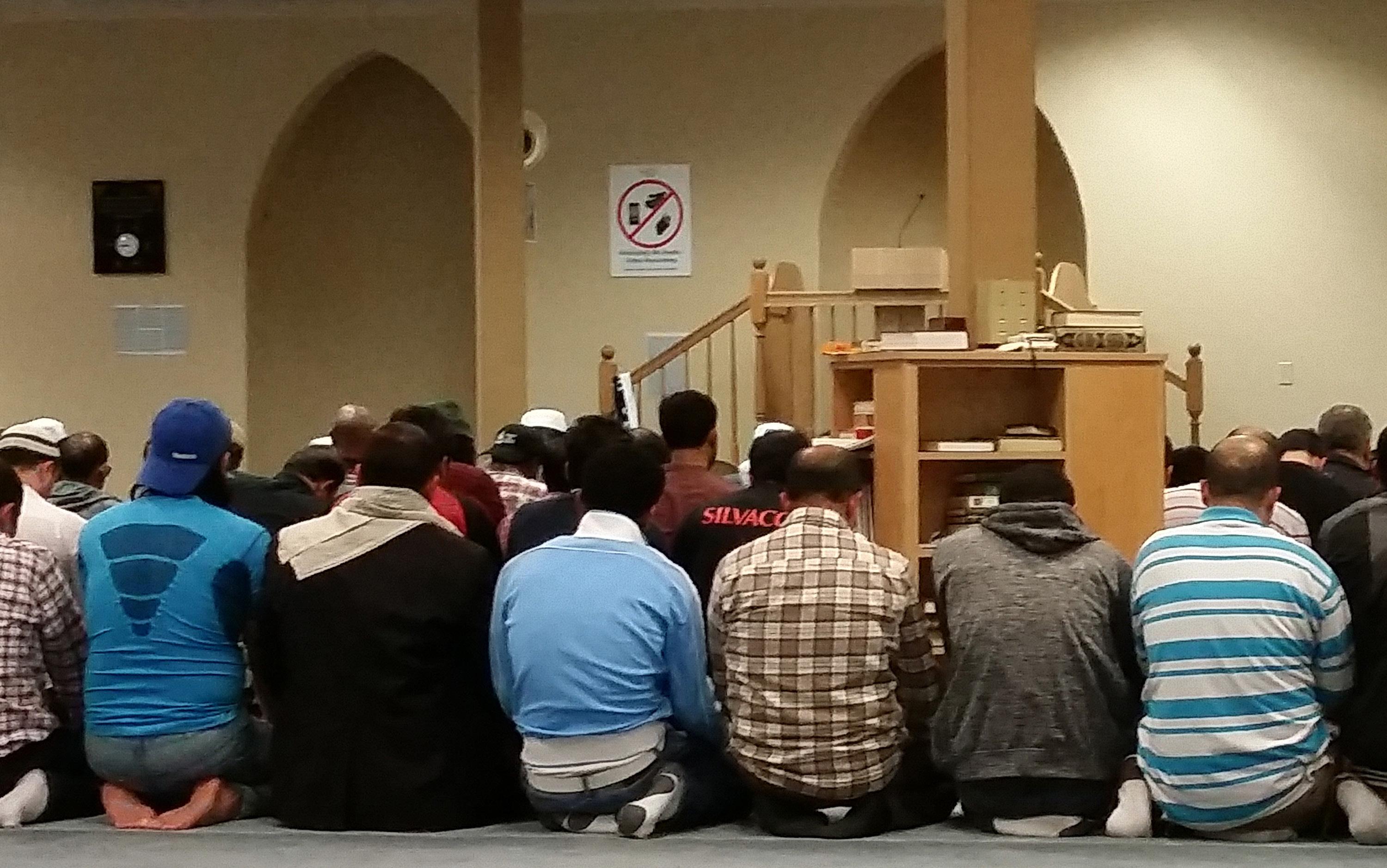
Despite creating a sense of unity, the Orlando shooting has also highlighted divisions within the LGBTQ+ community. While different gay groups agree on some measures to ensure guns don’t get into the wrong hands, they sometimes differ over where to draw the lines in the gun control debate.
Much of the LGBTQ+ community has turned toward fighting for tighter gun control. On June 17, the Human Rights Campaign, the largest LGBT civil rights group in the United States, announced its support for tighter gun laws.
Other activist groups in the community, including the Pink Pistols, continue to support gun rights in the United States. The Pink Pistols are an LGBTQ+ community that seeks to preserve the right to carry firearms.
Nikki Stallard, spokesperson for the Pink Pistols’ San Jose chapter, said the gay community is splintered in its response to supporting or suppressing gun rights.
“We’re looking at the beginning of a firestorm,” Stallard said. “You’re looking at a potential war within the gay community about this.”
Stallard believes that far-reaching restrictions on gun laws would take away
the people’s ability to defend themselves in public places. Many gay Americans, as well as straight ones, would not freely follow major changes in gun control rights, she said.
“Civilian disarmament is victim disarmament,” Stallard said. “Disarming potential victims emboldens predators. The American people are not going to voluntarily surrender their firearms.”
David Stacy, the government affairs director for the Human Rights Campaign, believes in “common sense” laws, which advocate for tighter gun control across the nation.
“Across the LGBT community, there’s a diversity of views on gun control, but we really got to this spot because of the ongoing violence against the LGBT community,” Stacy said. “Large parts of the violence have to do with guns. We need to incorporate common sense when dealing with this situation.”
One thing both sides can agree on: The June 12 shooting at a gay nightclub in Orlando, Florida, which killed 49 and wounded 53, shattered any sense of security within the entire American LGBTQ+ community.
“In the immediate aftermath, people saw how dangerous guns really are,” Stacy said. “In a time when expectations of America are rising, to have this attack at a place where people would normally feel
safe, is now a deadly space.”
Stallard said members of the Pink Pistols feels stuck between conservative and liberal politics. She criticized how both political parties praised one issue, but vilified the other issue.
“Politicians who are great on gun rights were terrible on gay rights, and people who were great on gay rights were terrible on gun rights, so it is kind of like standing in the middle of crossfire from both angles,” Stallard said. “Why can’t we be for human rights and gun rights at the same time?”
Both Stallard and Stacy supported the use of background checks to ensure that people with felony convictions and mental health issues could not acquire a firearm. Quinnipiac University found in an online poll that 85 percent of Americans support background checks while purchasing a firearm.
“Certainly we should stop bad people from buying guns, like people with mental health problems,” said Stallard. “There’s no reason why we shouldn’t have a solid federal background check system.”
As in the larger society, gay groups are split over the appropriate level of gun control across the United States, but the LGBT community appears to be united in efforts to preserve the Second Amendment. Both the Human Rights Campaign and Pink Pistols believe people should
have the constitutional right to bear arms despite their differences on specific gun control measures, Stacy and Stallard said.
“People have a right to the Second Amendment,” Stacy said. “What we want to see is to keep guns out of the hands of people who shouldn’t have them.”
The community also agrees on the need to bring people together against terrorism and discrimination against the LGBT community. Stallard believes that people should view the attack at Orlando’s Pulse nightclub as an attack against the United States rather than the LGBT community.
“This was not just an attack on the LGBT community; it was an attack on America. In order for us to defend ourselves, we keep ourselves open for the rest of America too,” Stallard said.
Darcy Hudson, a transgender male who frequently visits the LGBTQ+ Youth Space in San Jose, agrees with Stallard’s views to look beyond their differences in the debate.
“Regardless of whether we get gun control bills passed or not, there still needs to be a movement in the community where we say enough is enough and move forward,” Hudson said. “Whether or not you want to pass gun laws or don’t want to pass gun laws, letting the fear control you is not going to be good for anyone.”
of college, read letters from Katherman’s young sons, Jason, 8, and Josh, 10, to their father.
“It’s not fair that you get to be in heaven talking to Bible characters and Abraham Lincoln,” the letter from Jason said.
“We really miss you, and we wish you were here. You really loved the Lord, mom, me, and Jason,” Josh wrote.
Academy peers and San Jose officers shared memories about Katherman’s exceptional motorcycle skills, basketball dunking, and impersonations of colleagues.
Michael Whittington, Katherman’s field training partner at the police academy, shared his experiences with “KatMan,” as they called him in the academy.
“It’s clear to me, our roles,” Whittington said. “The boy was built for power. He was my superstar, and I was his cheerleader. I got to sit on the bleachers and watch the game of his life, and I am a better man because of it. Thank you for letting me watch the greatest game on earth.”
Throughout the event, almost every speaker touched on Katherman’s fondness for ice cream and sweets. Garcia shared how Katherman’s unit was often known as “90-food-hundred,” rather than
Garcia continued the service by sharing his reaction when he first heard the tragic news. “‘Eddie, he’s gone.’ I will never forget those words,” Garcia said.
9400, for their noteworthy ice cream socials.
Katherman’s American flag-dressed casket was escorted into the memorial with a bagpipe company, Katherman’s wife and children, and his colleagues in the motorcycle unit.
Detective Chau Pham, who also attended the academy with Katherman led the crowd in cheers.
“Who are we here for?” Pham asked. “Mike!” the crowd shouted, cheering and whistling with passion.
“Make sure it counts now!” Pham said.
Before the ceremony began, a brigade of motorcycles made its way around Santa Clara and Autumn streets, which were partially closed for the memorial.

“I got to sit on the bleachers and watch the game of his life, and I am a better man because of it.”
— Michael Whittington, Katherman’s field training partner at the police academy
Two San Jose Fire Department trucks raised their ladders to display a United States flag, under which police motorcyclists zoomed past with their lights flashing. The flags outside of the SAP Center flew at half-staff.
Motorcycles lined the closed portion of South Autumn Street. Officers, captains, sergeants, cadets and volunteers alike began marching into the SAP Center to honor Officer #3900 (his badge number).
The final radio dispatch was read aloud, releasing Katherman, call number 9204, from duty. “9204, no response … a moment of silence … may you rest in peace … your legacy will be carried on through your sons who you loved so dearly. Godspeed, 9204.”

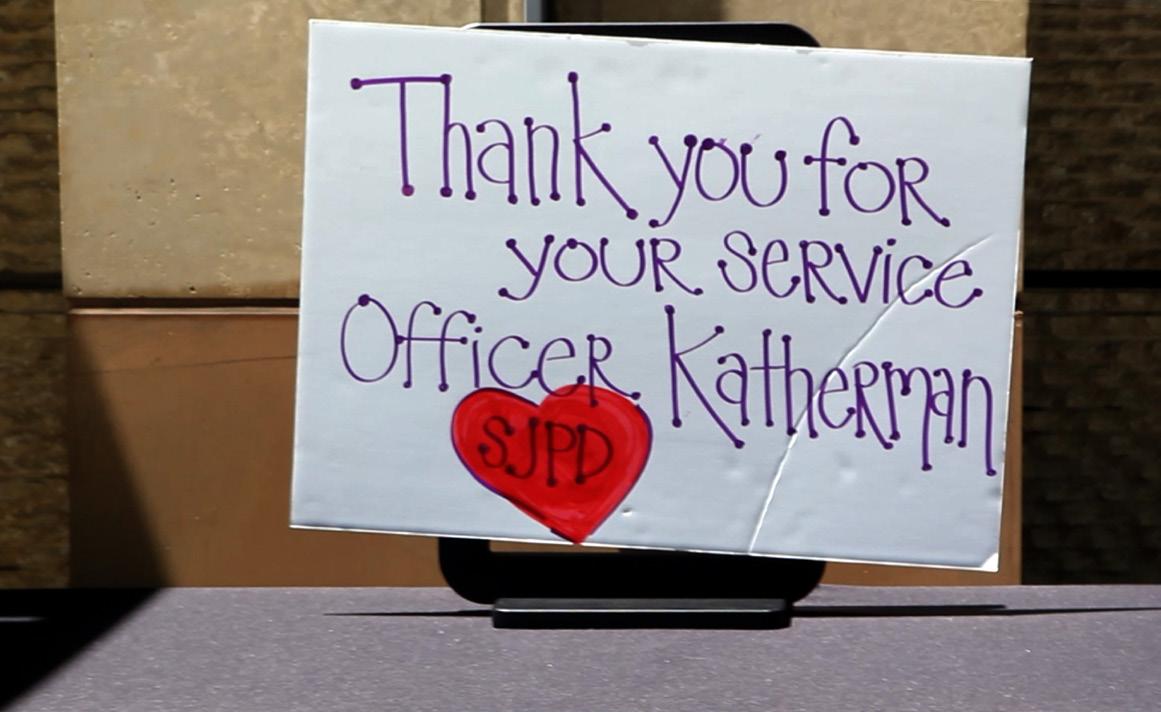


The world is changing, and it seems to me that more than ever, I have to watch what I say. I’ve often been accused of using rude language, and I understand when people get offended. But how far should political correctness influence American culture? In a progressive world, people have become hypersensitive to “political incorrectness,” and despite its offensiveness, profanity still has a place in American culture. Rather than banning this kind of language, we should understand the culture in which it is used.
“Jane, you ignorant slut,” Dan Aykroyd said in a 1979 Saturday Night Live skit. I saw this as a satirical comedy, which criticized traditional gender roles of both men and women. Some people were understandably offended over the word “slut” because they saw it as an offensive term towards women engaging in sexual activities. Though I would never use the word “slut” to belittle a woman, I continue to support the use of profanity within the world of comedy and satire.
The use of controversial words in satire isn’t a new trend. In 1884, Huckleberry Finn was published, and it used the word “nigger” 219 times. In 2011, school districts across America banned Huckleberry Finn for its usage of the “n-word,” and in the same year, a new edition of the book replaced all 219 counts of the “n-word” with the word “slave” in an attempt to comfort the reader. But I think this sort of censorship is disgraceful to the great American novel. Mark Twain was conveying that though Jim may have fled slavery, he never left the 19th century stereotypes for African-Americans. This sort of language has a place in this novel because it criticizes the perceptions of blacks during a time in American history.
This kind of language is a focal point for comedy, satire, and music. In 1979, Monty Python created Life of Brian, which is a mockery of Jesus’s life in which the producers also sarcastically depicted two Roman guards with speech impediments. The content received uproars of protest across the world, yet it was still the highest grossing film in North America that year. Over the past decade, the rapper Eminem received criticism for his use of homophobic and racial slurs in his music, yet he has won 15 Grammy Awards. Television shows like South Park continue to use dark humor to depict controversial topics, but it was voted the third greatest cartoon of all time for its criticisms of American politics and social life.
I believe that the root of people’s reluctance to hear this kind of language is their unwillingness to admit that there is any problem in society. Louis C.K., a stand-up comedian, explains it best when he said, “A cringe is – it’s repelling away from something, so it’s an area that you don’t want to think about. To me, it’s fun to take a deep breath, which is the opposite of a cringe, and walk in there.”
People cringe when they hear profanity in music, comedy, and satire because they don’t want to hear it. They take the word out of its context and become hypersensitive when they think that the word is being used to attack them personally.
I believe that people should exercise verbal discipline in professional situations, and I don’t support the use of profanity to intentionally hurt someone. But when it comes to culture – the culture in literature, music, and comedy – I think “political incorrectness” should be accepted as a part of its art form. You should look beyond the actual word and look at what the piece is trying to say as a whole.
My opposition argues that practices like slavery and segregation were also ingrained in American culture, and just because it is acceptable in popular culture, the use of racist and sexist words is still morally wrong. But what must be understood is that people have the ability to walk away from the popular culture that they deem offensive, something that couldn’t be done with segregation or slavery. It must also be understood that the offensive language used in popular culture today isn’t used to promote hatred, but rather, to make people laugh at a prevalent social issue.
I just think that people need to stop being offended so easily. There is a boundary as to what someone can say, but that boundary should be determined based on the context in which a word is being used and not the word itself.
Boys do not experience this world the same way girls do.
It is not always a worry for men that walking home by yourself late at night could mean danger. The churning feeling you get in your stomach when the cat calls that are just words now might escalate into something more threatening. That’s because of the way I was dressed, jeans tight and showing cleavage must mean I am looking for that attention, and it’s okay to touch me without my permission.
A couple years ago, Toronto police officer Michael Sanguinetti outraged women across North America when he said, “Women should avoid dressing like sluts in order not to be victimized.”
“Slut” is a not only a derogatory term used to shame women for their sexual history. The word creates a mindset towards women that is demeaning and dangerous. The American public has reached the consensus that any woman who falls under the “slut” category are unworthy of being protected from sexual assault.
It’s difficult for boys or men to understand how degrading being called a slut is because there are no terms that call out men for the amount of sexual partners they’ve had.
Most importantly, it is more common that men are born into a privilege and a power that excuses their actions. Most women don’t have this privilege.
For men, their sexual pursuits are celebrated and encouraged, not shamed. They do not face the same fears as women, who can’t carry out the same simple tasks as men, like going places alone, walking home at night, or even enjoy social outings without an inherent fear of danger. Therefore, men have no considerable views to add to this argument.
But I get it. In our society the word has a certain comedy factor or cultural acceptance. It’s funny to undermine the achievements of women by bringing up their sexual history.
Like in the famous Saturday Night Live skit that aired in 1979, hearing comedian Dan Aykroyd call Jane Curtin an “ignorant slut” did make me laugh the first time. But what concerned me were the messages I internalized from this skit.
The first was that in order to be respected, I can’t have sex. No matter what I achieve, my sexual history will be taken into account, while successful men such as Bill Clinton or John F. Kennedy are seen as lovable womanizers.
The second message was the most concerning. There were men in that audience and men today who would laugh their asses off at the punch line. Apparently, knocking down women and making them feel inferior is a joke.
It puts me in a confusing situation, because on one hand, I laughed. But it doesn’t take away that these terms perpetuate rape culture and excuse men from taking responsibility for their own actions. At a time when 90 percent of rape victims are girls or women, there is nothing funny about the word “slut.”
The argument that “slut” is used as a joke, or it’s part of a culture, is a copout. There is a social norm in American culture that hypersexualizes women but shames them for their sexual pursuits.
TV advertisements use women’s bodies as commodities: butts, breasts and legs, not as human beings. Promoting the idea that women can be dissected and used only for their parts is dehumanizing and puts them in potential danger. Using the word adds to the normalization of violence against women in our culture, but it shouldn’t be accepted just because it’s the status quo.
“Slut,” contributes to this mindset, whether or not it is a joke. It upholds the idea that there is a whole category of women who do not deserve respect because they are solely under-valued for the amount of sex they have.
Excusing the use of this word is still supporting the social construct that women have to meet certain standards and change their personal preferences for their own safety.
Personally, altering the way I dress or the amount of makeup I wear in order to avoid the categorization of “slut” and decrease my chances of being sexually assaulted takes more effort than refraining from calling someone a “slut.”
It’s easier to abstain from calling women derogatory names to ensure their safety than to make excuses as to why calling someone a slut is okay. What outrages me is the fact that people are still defending the word. There is nothing beneficial or earth shatteringly positive about using derogatory names and sustaining the already exploitative attitudes America has towards women.
So what’s to lose if you take it out of your vocabulary completely?
‘Finding Dory’ and diversity could be a sea change for HollywoodBy Wfah Afaneh Mosaic Staff Writer
After 13 years, “Finding Dory” has finally emerged. The wait for the sequel to “Finding Nemo” is surprisingly worth it. It was inspirational, magnificent, funny, and sad all at once.
From a transgender stingray to Dory’s famous phrase, “just keep swimming,” there were many impactful insights in “Finding Dory.” That includes the attention brought to the many identity issues and disabilities the characters face, which many will find inspirational.
“Finding Nemo” brought attention to a father who lost his child, Nemo. He went through a journey through the ocean and finally caught up to his son. He got help from Dory who suffered through shortterm memory loss.

(Provided art, Disney)
nection with a movie character that is going through similar things.
Throughout the movie, Dory slowly gets her memory back. She starts to remember parts of her life that she forgot. This ends up helping her on her journey to find her family. Dory did not give up, which shows kids that just because you are going through a rough patch in life does not mean that you can not do what you set your mind to.
A rude octopus, Hank, has a missing tentacle. One of the sea horses has a brain issue that affects the way it communicates. There is a whale, Destiny, who has trouble seeing and always bumps into things.
This movie could help spark change in filmmaking. The character diversity could influence directors to add characters that reflect the world of the LGBTQ+ com-
“Finding Dory” begins by going in depth with Dory’s story of when she was young and struggling with short-term memory loss. The movie also features characters who are sick, are missing parts, and have sight problems that affected the way they acted.
munity and those with disabilities. We need to have kids movies that address these elements. It is amazing to see a movie that addresses these issues that many children face in real life. It shows kids that they can embrace who they are.
The stingray was revealed as transgender by voice actor Ellen DeGeneres during the movie’s promotional campaign. Transgender viewers can finally feel a con-
A powerful sequence featuring Dory going to get Nemo and his dad back shows that family does not need to be limited to people related by blood. It is beautiful to know that Pixar is placing these messages in a children’s movie.
The most inspirational character is Dory and the way she overcomes her memory loss. Disabilities and struggles did not stop the characters. Dory believed that even if the situation is tough, “just keep swimming.”
This shows that anyone can overcome a struggle.
The San Francisco Giants encourage a night of philanthropy in partnership with organization Autism Speaks
 By Skylar De Paul Mosaic Staff Writer
By Skylar De Paul Mosaic Staff Writer
SAN FRANCISCO -- Evan
Iyemura, 11, entered the world with doctors telling his family that he may never have the ability to speak or be comfortable with people touching him.
Iyemura, now serving as Alpha Xi Delta collegiate sorority’s “mascot,” as his mother refers to him, greets nearly every person he meets with a hug and a smile.
Evan is one of about 25,000 people in the Bay Area under the autistic spectrum -- a phrase used to describe the wide range of all possible challenges of the disability.
To bring attention to the disability, the San Francisco Giants hosted Autism Awareness Night on June 14 in partnership with organizations Autism Speaks and Anova. Former Giant and autism- awareness advocate Will Clark began his work with the autistic community over 18 years ago when his son, Trey Clark, 20, was diagnosed with the brain disorder.
“The special event nights raise awareness, that’s first off,” said Clark, who left major league baseball in 2000 while playing for the Cardinals. “Because we’ve partnered with the Giants, it actually raises some funds, too, to help Autism Speaks and Anova.”
According to Autism Speaks, more children are affected by autism than childhood cancer, juvenile diabetes and pediatric AIDS combined.
Bob and Suzanne Wright, grandparents who started the organization in support of their autistic grandson, Christian, began the organization in 2005 to raise funding and awareness for autism through walks and community events.
“When Bob and Suzanne Wright created Autism Speaks,” Jacqueline Forsythe, executive director of Autism Speaks for the Bay Area and Pacific Northwest, said, “the No. 1 thing was to generate that awareness of ‘what is autism?’ How is it affecting not only families that have the direct connection, but communi-
ties, and what can communities do in joining together to help the families that have a loved one with autism.”
Lisa Major’s son, Nathaniel, 24, is on the autistic spectrum. Nathaniel, an avid Giants fan, graduated with honors from Foothill College last year with an AA degree in intercultural communications.
Since then, Nathaniel has established his own roots in autism advocacy with Project Speak Up, an initiative to encourage employers to hire people under the spectrum.
“I go to schools and student groups and talk about autism and Autism Speaks,” Nathaniel said. “For public speaking, now I’m going to offices and encouraging them how to hire people on the spectrum, because a lot of them have a tough time getting hired. This is a way to convince them that they all have the potential.”
Autism Speaks’ supporters, such as Alpha Xi Delta, hold walks, poker tournaments and other community events to help clear the misunderstanding of the autistic community.
“It brings more awareness to lots of different people that may not be really thinking about autism,” said Evangeline Imana-Iyemura, co-chair for Autism Speaks and mother of Evan. “A lot of the ballparks that are doing awareness nights make accommodations for our families, which allows us who normally wouldn’t be able to do this to come out and enjoy a game. It is so important to try to include our children and show the world that they are ‘normal’ and to redefine what normal means.”
Jill Escher, president of the Autism Society of the San Francisco Bay Area and mother of Sophie, who is under the spectrum, said there has been “a 2,800 percent increase in severe autism cases” since the early 1980s, partly because it is better recognized than it once was.
“We need to realize that children with autism become adults with autism,” Escher said. “We think about autism and we think about kids. With precious, rare exceptions, those kids become adults, often severely and permanently disabled. That means


adjusting just about everything that we have in terms of our plans and expectations in order to make places for them in the world.”
At this time, the people involved with Autism Speaks are continuing the movement for expanding housing and employment opportunities, finding new policies to help adults under the spectrum who have difficulties caring for themselves, and revealing the potential of the autistic community.
“We as a community at large can embrace the concept of more diversi-
ty in the terms of this (autistic) community experiencing the world in a different way,” Lisa Major said. “But they also have great wisdom and great clarity. Because they see the world in such a black-and-white way, they can cut through all of the agendas.
“I’d love to get to the point where autism and other diversities are accepted as just as valid and just as able to contribute, and to give them the opportunity to realize their potential and not be limited by their challenges.”
Sixteen-year-old Eric Walton has been battling bipolar disorder his whole life. In Idaho, there are few therapists or support groups, so he struggled to find help. His mother, Lisa Long, grappled with affording that help.
When Eric was 11, his actions got worse and harmful: His dad pressed charges after Eric attacked him during a bipolar rage. Long believed that bringing charges was the only way to get support for Eric.
“The court ordered a 20-511A treatment team to convene on Eric’s behalf. It’s a team that coordinates care for the child across the spectrum of services available,” Long said. Services included psychiatric care, individual and family therapy, parent training and coordination with Eric’s
school district.
The family’s experience is an extreme case but nonetheless reflects the struggles many families experience today. They must fight for the costly and scarce resources their children need.
To Long, Eric was not “just being a boy,” as some told her. Doctors were constantly telling her that he was acting “normal” or that he was autistic. When she finally learned it was bipolar disorder, she realized it was going to be a long road.
“Mental illness is a whole family illness,” she said.
“In Idaho and in some other states, in order to access mental health services like psychosocial rehabilitation,” she said, “you only have the option of charging the child with a crime to get support.”
Rachel Del Rossi, the managing director of the Mental Health Association of
San Francisco, said it is “extremely disrespectful and dehumanizing to criminalize something that a person is unable to control. Many families lose everything to try to help their child. They are told that it would be easier to take the child away.”
Long has other children to care for, but much of the family’s money was being spent on trying to get those resources for Eric.
Finding the money to support the person who is going through a mental illness is extremely hard.
“Paying for mental health services for your child can cost as much as four years of tuition to Harvard,” Long said.
It’s the financial burden that has driven some desperate families like Long’s to have charges pressed against their child because at least then the child can receive some type of support like psychosocial rehabilitation.
Long and many others advocating for mental health aid supported the federal bill HR 2646. It was passed by Congress this year to help families financially and offer more support.
Long believes this is the start to ending stigma and getting more resources out for those who are battling mental health challenges.
“Many are quick to say that it is always the mom’s fault when it isn’t. It is the system’s fault,” Long said.
To end the prejudice that many have against mental illness, Del Rossi believed that having a “connection” with an affected person on a human level will help others understand their problems.
“We need to get to know the person in order to help and end the stigma and discrimination,” Long said.
A soft breeze carries the sweet bakery scent of piping-hot Brussels waffles, wafting alongside the more pungent smell of spicy, stir-fried Korean pork with Tater Tots. It’s a Monday night dinner at the parking lot of the Blossom Hill VTA station, and young families populate the grounds of the food truck gathering Movable Feast.
The combination of two seemingly contradictory aromas is not unpleasant. Instead, it illustrates the diversity of cultures represented through food at popular food truck conventions throughout the Bay Area. At every event, several trucks gather to offer a range of foods to customers, from fried beef sandwiches to Argentinian empanadas to regular carne asada tacos.
The food truck industry has risen to prominence in the Bay Area over the past few years, due to laws that are more “progressive” than other areas in California, according to Jeanette Fitzgearl, who has owned a truck for several years. Aspiring chefs open trucks rather than brick-andmortar restaurants due to lower costs and risks, and established restaurants look to expand their business to a wider audience by using these trucks to cater. Furthermore, companies such as Off the Grid and Moveable Feast hold regular food truck conventions in the Bay Area, providing customers with a variety of food to choose from.
“Opening a restaurant limits you to the location, but with trucks, you get to go where the business is,” said Young Huh, who works with the food truck Kona Ice.
For Kelsey Currier of Sam’s Chowder House, food trucks offer an opportunity to spread the word about the already-established restaurant.
“Trucks get the word out and reach more people, because of catering company events,” said Currier. She coordinates catering for Sam’s Chowder House. The restaurant has locations in Palo Alto and Half Moon Bay, but through the Chowdermobiles, Sam’s reaches customers at Golden Gate Park, Earthquakes games, Off the Grid street food events, Presidio and Moveable Feast events.
Fitzgearl cited looser Bay Area food truck laws as the reason behind her decision to open a Cutesy Cupcakes truck, an extension of the original store located in Scotts Valley.
“We’re from Santa Cruz, and they’re behind the times over there,” Fitzgearl said. “Their food truck laws are so strict that it’s too difficult to run a food truck over there. San Jose and the entire Bay Area are starting to really progress with the food truck movement, which is nice.”
Other trucks are free-standing, starting up with a partner and a dream.
“I was unemployed,” said Hao Thai, owner of Porky’s SJ. “My friend called me and said, ‘Let’s just start a truck,’ and I said ‘Sure.’”
The convenience factor of food truck availability also helps with business. Thai said customers will favor that accessibility above other factors.
However, starting a truck with no prior restaurant experience comes with its own set of problems, especially competition. Trucks have to make a name for themselves and stand out among a sea of rivals.
“The first year was hard,” Thai admitted. “We just took everything that fell into our hands. It’s competitive: every day, trucks are coming in, and trucks are closing down. We would go out, see what kind of food was out there, and make sure not to copy. Not everyone likes pork, but there’s no other fusion pork truck out there,” Thai said.
Even for established trucks, problems with advertising and marketing don’t go away. For example, review sites like Yelp
by Yelp. They offered to remove bad reviews and move good reviews up for a certain amount of money or advertising.”
Similar claims about Yelp’s ranking system have been circulating the internet for several years. The company has denied the accusations, and did not respond to requests for comment.
Another issue that food trucks face is attracting the more mature demographic.
“People who are 40 or older are harder to bring in because they don’t tend to be
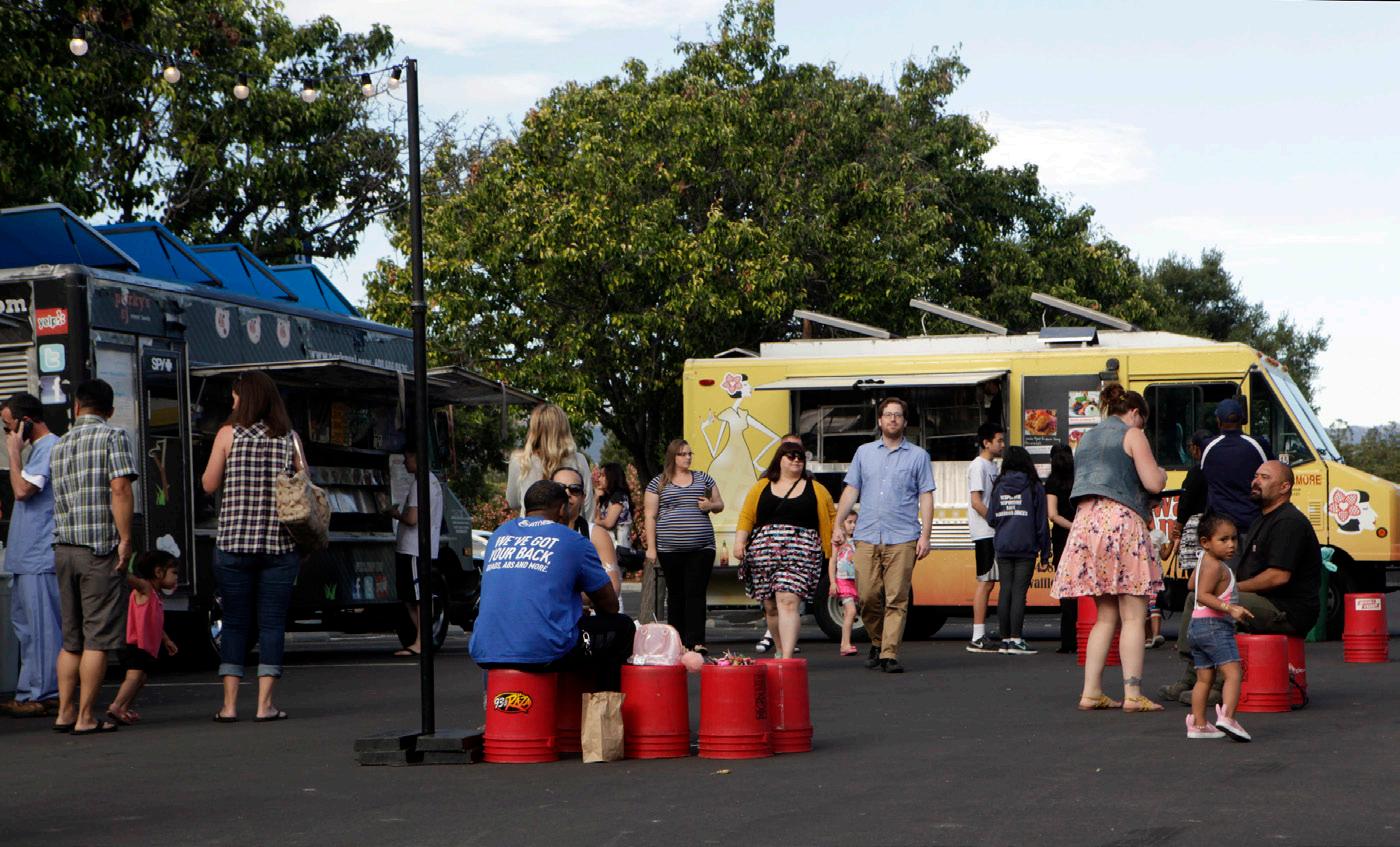
are a go-to for customers when deciding where to eat, but some food truck owners claim that it is not always accurate.
“In the beginning, I felt Yelp reviews were important for business, but over the years, I learned that Yelp isn’t accurate because they will take money to make bad [reviews] go away,” Huh said.
Thai agreed, saying, “We got harassed
A big, floppy sunhat bounced on Cathy White’s head as she pushed a black baby stroller laden with bags to carry home their fresh produce for the week. She arrived with excited children riding scooters close behind her.
Priscilla Yuan slowly browsed the various stands filled with endless stacks of leeks and green onions, bundles of cilantro and herbs bound with string and rubber bands, and bursting redstringed bags of oranges.
Demand for the freshest organic produce around has created a search for farmers’ markets throughout San Jose. The availability of fresh fruits and vegetables has allowed neighbors to come to enjoy music, to eat prepared and raw food, and to talk together as a community.
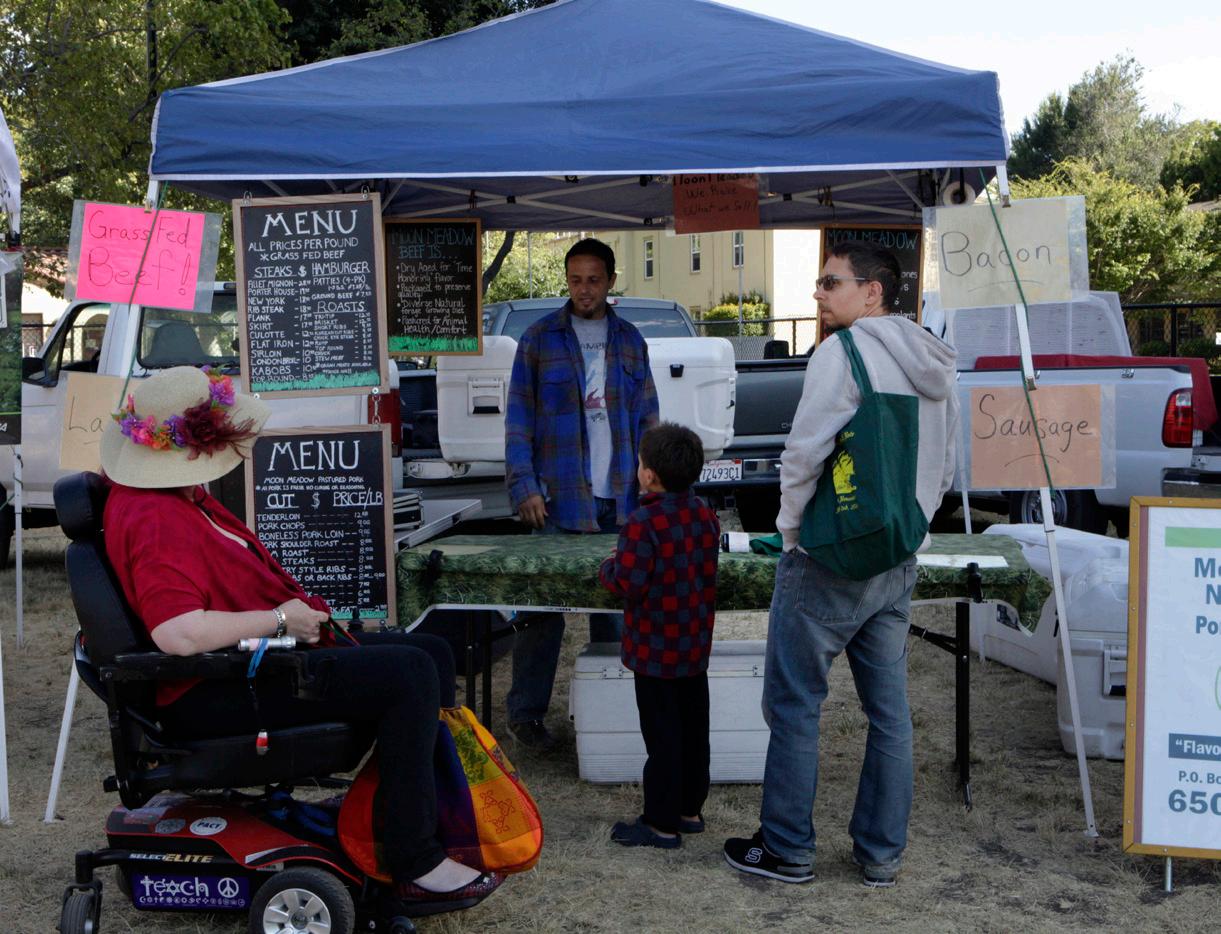
ket was established because there was no place for people to buy quality fresh fruit and vegetables within a 5-mile radius.
Pacific Coast Farmers’ Market Association market manager Moises Mena has worked at San Jose’s East Santa Clara Street farmers market since 2011 and recognizes a community bond that he did not see when he was young.
“I grew up in the suburbs in South San Jose, and I didn’t know anything about that kind of life until I started working at this market,” he said. “They know each other. Their kids go to the same schools, attend the same after-school activities, and know each other from being downtown residents.”
White enjoys the social benefits of visiting the market every week.
“I just see my neighbors here, so it is nice to meet them here,” White said. “My kids always want to come. They like the samples; they have chalk and games here.”
She enjoys the atmosphere and likes to support local businesses by purchasing cheaper but high-quality fresh goods from small farms rather than a food distributor.
Local farmer Stevie Hall brings fresh produce like strawberries and seasonal vegetables from his 5-acre farm in Salinas to farmers markets around the Bay Area to promote healthy lifestyles in neighborhoods.
“I want to support communities that do not have a lot of fresh produce and I want to make sure that they have access to fresh local food,” Hall said. “We pick everything daily, and this is less than a day old, so we are locking in all the key nutrients.”
Each farm has to be certified annually by the county department of agriculture to ensure it only sells produce it grows. Once a farm gains the county’s approval, it receives the certified producer’s certificate to sell in markets and to restaurants.
Mena said the East Santa Clara Street farmers mar-
“The United States Department of Agriculture designated this area a ‘food desert,’ ” Mena said. “This farmers market started as a USDA grant-funded market.”
After two years, the funding for the market ran out and the PCFMA decided to boost attendance and keep the market financially afloat by having a local musician, bounce houses and other attractions on the first Wednesday of each month.
At the Santa Clara Kaiser Permanente farmers market, college sophomore Delphine Zhu and her mother walked along the rocky path, moving from stand to stand after waiting in line for what seemed like an eternity. They strolled hand in hand amid a sea of doctors, convalescing hospital patients and vendors with buckets of grainy hummus, bright red strawberries, multicolored orchids and fresh vegetables on display.
On Lawrence Expressway in Santa Clara Kaiser Permanente hosts a market every Friday from 8:30 a.m. to 1:30 p.m. for patients and their families and community members. Nurses and doctors on break can take a short breather from the operating and exam rooms.
Ron Yamaguchi, a urologist, enjoys the convenience of the market and price of the produce.
“Not only is it healthy for you, but if you consistently eat fresh produce you will have better concentration, better energy, and your mood will be better,” Yamaguchi said.
Zhu visited the farmers market on Kaiser’s grounds after picking up prescriptions for her mother after looking at an advertisement.
“My mom saw that they had a farmers market here and we decided to stop by,” Zhu said. “It is really great to have it in a hospital courtyard because it promotes the local food sources.”
experimental with food,” Thai said, “unless they’re at a corporate or alcohol-related event.”
He hopes that with time, that could change.
“Originally, I thought food trucks were a fad, but being in the industry for four years, it’s not going away,” he said.
Starbucks customer Drew
Pustelniknormally spends $3 per visit to Starbucks. Following the old Starbucks rewards system, which rewarded guests with a free drink after a set amount of purchases, she would only have to spend $36 to redeem her free drink.
Pustelnik, of East Moline, Illinois, complained persistently on social media about her disappointment with the new reward system. Under the new system, she must spend $62 before receiving a reward — almost double the amount she originally had to spend.
It’s been two months since Starbucks changed its rewards program, but the changes still cause consternation.
Customers redeem free drinks based on the number of stars in their account. Instead of awarding a star per visit, the program now gives two stars per dollar spent. This means that the more you spend, the faster you receive a free drink.
Starbucks insisted change was meant to please the majority of its consumers. The company had “sent out an email to a lot of [their] customers asking what would you like to see different? And they said more stars,” said a Starbucks employee who spoke on condition of anonymity. “The customers want to get a free drink quicker.”
In the past, customers were eligible to redeem a free drink after earning 13 stars, but now customers must earn 125 stars — a huge change for many.
“I didn’t like the large jump from 13 to 125 stars,” said Starbucks customer Vrunda Shah of Fremont.
“It feels like you have a long way to go to reach 125 and receive the free drink, whereas the number 13 appeared more attainable.”
An informal customer survey conducted at a local Starbucks found that most spent between $4 to $7 per visit at Starbucks, meaning it would take around nine to 16 purchases to earn a free drink. This new system affects those, such as Pustelnik, who normally purchase cheap drinks.
Another complaint from customers is the complicated aspect of the new program. Starbucks formerly gave out 1 star per visit, but now grants two stars for every $1 spent. The extra calculation makes tracking rewards difficult for many consumers.
“It’s really confusing. I don’t know if I’m eligible for a reward or not,” said Mariam Aiyed, a loyal customer from Santa Clara. “The old format was more straightforward. I think I could easily get more rewards with the old format than the new one.”
Despite the confusing format and huge increase in number of stars needed, many Starbucks customers still recommend registering for a rewards card.
“The customers have this opportunity to get free stuff, so might as well get a card,” said Tari Wimbley, who was interviewed at a San Jose Starbucks.
According to Starbucks, more than 500,000 people worldwide joined to receive the rewards card since the new system was introduced.
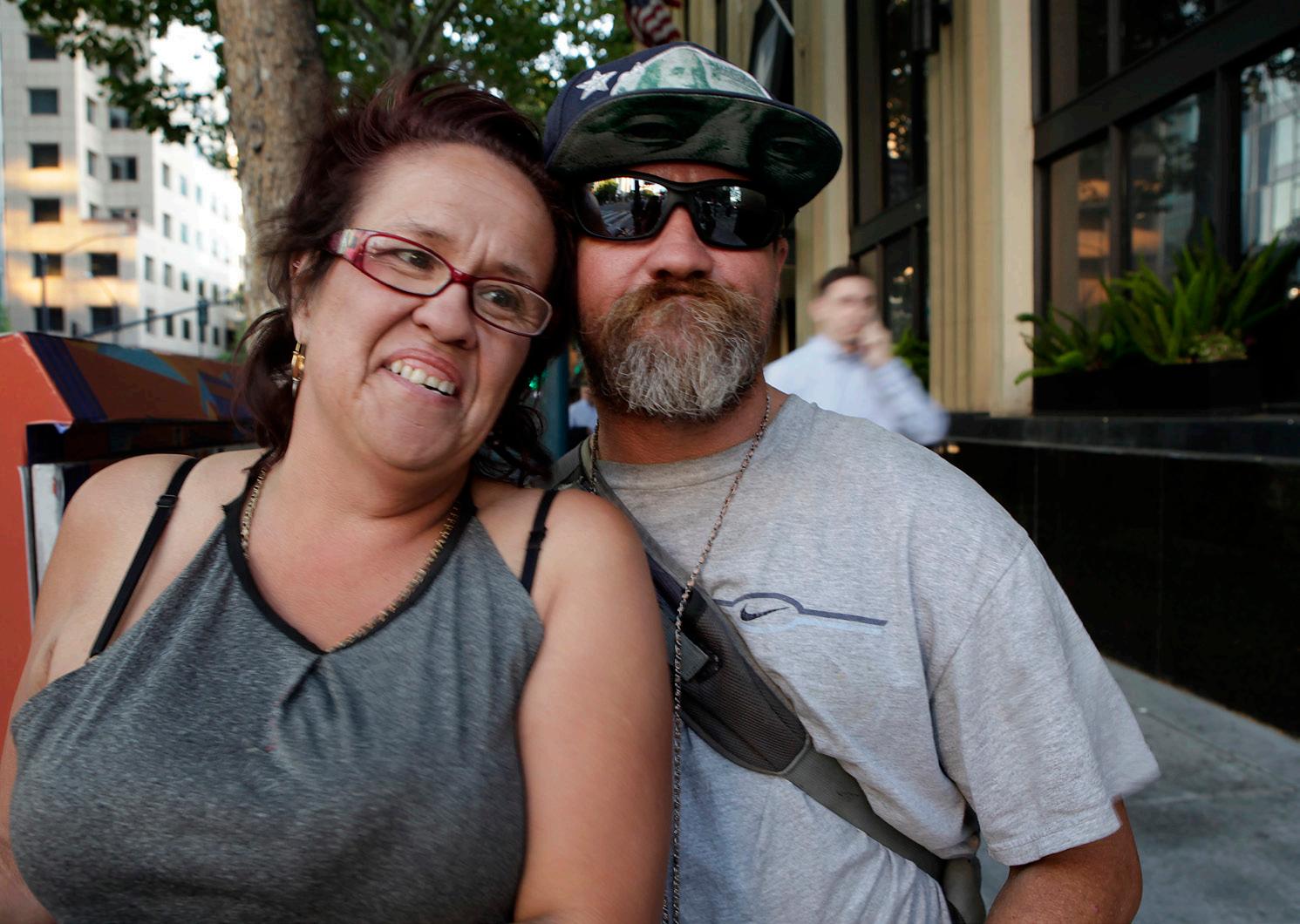
Eighteen months after San Jose cleared out one of America’s largest encampments, drawing national media attention to homelessness in Silicon Valley, some former residents of “The Jungle” still lay their heads every night in the doorways, alleys, sidewalks and creek banks of the city.
City and county officials admit that chronic homelessness remains a deeply difficult problem in an otherwise prosperous city, given the visibility of the problem. San Jose homeless response manager Ray Bramson says every resident of the huge, filthy encampment was offered shelter or support, but some turned it down. Officials insist they’re committed to ending homelessness, and they push a “housing first” bond measure that they hope county voters will support in November.
But for now, at least, little has changed for some of the hard-core homeless people chased out of the Jungle at the end of 2014.
Ana and Robert Leiter, a couple known as “the Honeymooners” eke out a living recycling bottles and cans at $2 a pound (four times more than they got in Arizona before they hitchhiked here). They are among those who declined to work with the city to find shelter. Ana Leiter has night terrors, which makes it hard for them to be accepted into housing programs and shelters, they said. Her husband won’t leave her side.
“A lot of us are still out here waiting for somewhere to go,” she said. “They didn’t make it easy, they just made more people (go) out in the open.”
Officials and advocates for the homeless say that more people have shelter since the Jungle was cleared, and a biennial census backs them up. Last year’s count found a decrease over the previous one, reversing an earlier trend, Bramson said.
“But even with the 15 percent reduction, there’s still 4,000 people who are homeless on any given night, and 70 percent of that population, about 2,800 people, are unsheltered and living on the streets.
“One emergency, one medical health issue, puts people on the streets because they’re living paycheck-to-paycheck,” Bramson said.
Ana Leiter agrees. She said she knew one disabled senior on Social Security who lost her housing voucher because she made $5 too much. Her friend was back on the streets.
Carol Patterson, vice president of marketing and
communications for Cityteam, a Christian nonprofit that provides services for the homeless in San Jose, agreed that cleaning out encampments often simply moves some of the the people down the street. Even so, she said, “I can’t really say that we saw a huge increase in the amount of homeless” since the Jungle closed. Cityteam’s shelter, however, is full every night.
Clearing out the Jungle, which sprawled along Coyote Creek at the intersection of Story Road, was a humane act, not a punishment, despite the disruption it caused, officials and advocates said. The situation was seen as intolerably dangerous to public health and the environment.
“It’s a tragedy that anyone has to live outside, but encampments are unsafe, unstable and unsuitable places for people to live,” Bramson said in an interview in a 12thfloor office at San Jose City Hall. “People living in them are at higher risk for illness, they’re at risk of victimization from other people that are preying upon them, and they just lack the day-to-day stability to really get back into their own lives and the self-sufficiency and stability that you need in this community to thrive.”
There are many causes of homelessness, but the soaring cost of housing in Silicon Valley is one of the key reasons the homeless are in such deep trouble, something many city officials and the Leiters agree on.
Moreover, businesses and residents in the Jungle area complained about all sorts of illegal activity, and large amounts of human waste polluted the creek. However, Bramson said, “The core of this project was that encampments are created by homelessness, and the only solution to homelessness is housing.”
The two-week cleanup project yielded 1,250 tons of debris, 2,800 gallons of biowaste and over 1,200 sharp needles used to inject addictive drugs. The camp earned unwelcome national media coverage to a city that would much rather brag about its creative, prosperous workforce, its mild weather and its diverse culture.
Closing the site was “extremely effective” in terms of public safety and the environment, Bramson concluded.
“But encampments are not a solution to the challenge of homelessness,” he said. “We need to find people safe, stable places where they can live and rejoin the rest of the housing community if we ever want to truly eliminate encampments.”
Several opportunities are underway or upcoming to make that happen. The city already spends $3.5 million a year from the general fund and has made an ongoing commitment to eliminating encampments. The goal is
to get people who are living near creeks and along the roadways quickly rehoused. Right now, there’s not nearly enough money to do what’s needed.
Early next month, $40 million will be released to the city in part to fund affordable housing.
But the true test of the public’s commitment comes in November, when Santa Clara County voters will have a chance to pass a potentially game-changing $930 million affordable-housing bond. If it passes, Bramson said, San Jose and rest of the county will at last have the resources to truly tackle chronic, hardcore homelessness head-on. It’d cost homeowners about $12.60 per $100,000 in assessed valuation for the next 30 years.
Recent polls suggest this bond has a good chance of getting the required two-thirds support, partly because the influential Silicon Valley Leadership Group has historically supported anti-homelessness programs. In the meantime, former Jungle residents who haven’t found homes yet fight for survival against poverty, mental and physical health problems and discrimination, as well as the risk of robbery or worse.
Some even look back with a little nostalgia on the Jungle; at least it was a place to go, keep your stuff, and maybe enjoy the security and company of friends.
“They had a place to put their heads down and didn’t have to worry,” Ana Leiter said.
Bramson said only a huge amount of money for housing and other critical needs for the homeless can really make a dent in the problem. He believes that “the most powerful thing a person living in San Jose or Santa Clara County can do is make their voices heard” by voting for the bond.
“We have to embrace the concept that our neighbors on the street are part of our community,” Bramson said. “And we need to do everything we can when these developments are coming into our communities to be accepting, to welcome these new people, and to make sure that they can become another vital part of each neighborhood that they move into.”
But even if the bond money doesn’t come through, people who want to help the homeless -- young people, for example, who can’t yet vote — can play a role, Cityteam’s Patterson said. They could hold a food drive or a hygiene drive, for example.
Such small, private efforts can’t do much on their own, but they’re certainly meaningful to people like the Leiters, who often have no idea where they will get their next meal.
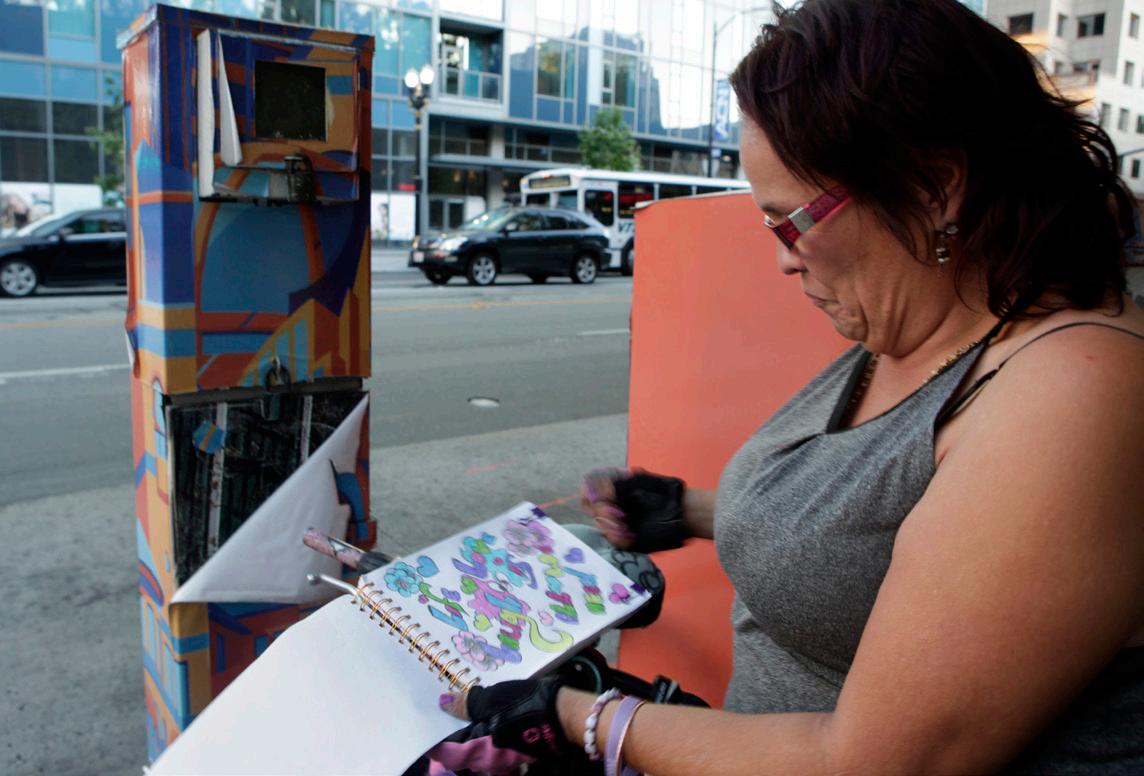
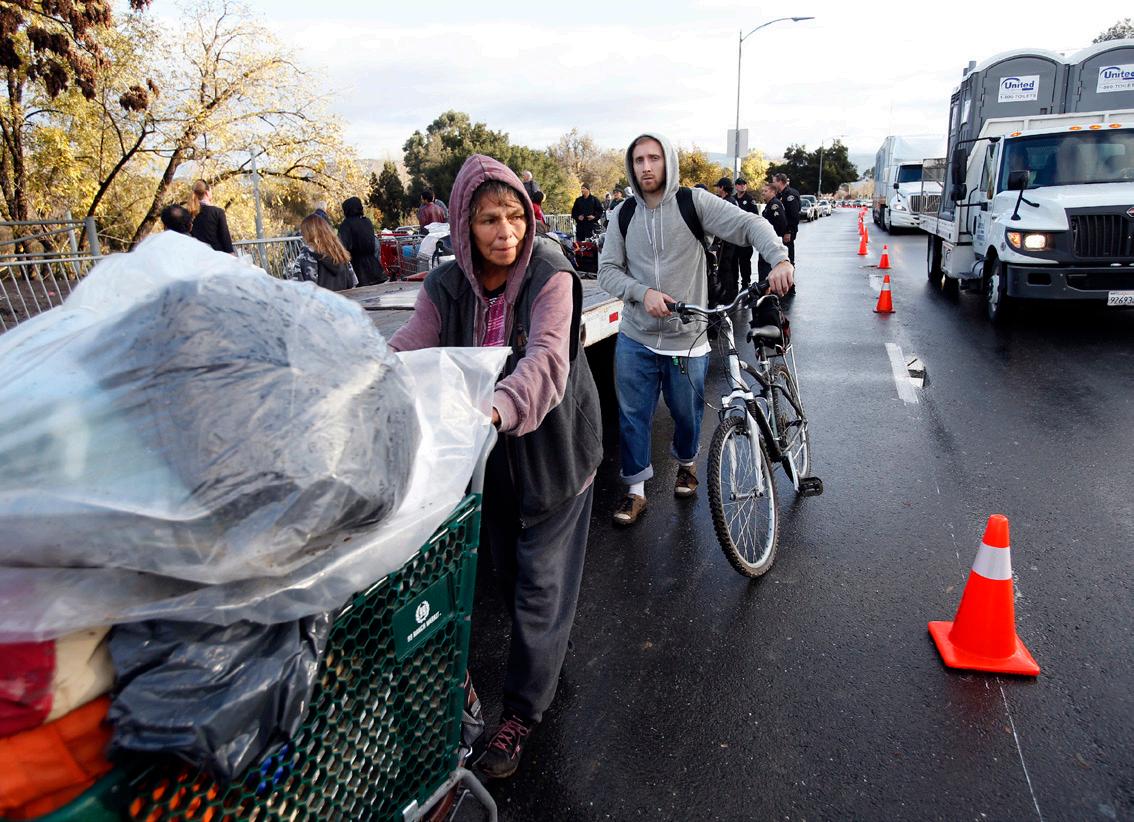
More than 4,000 homeless people live in shelters, streets, cars, and under bridges in San Jose — one of the wealthiest cities in America. Because almost half of them are women, there are many shelters and churches that help keep them safe.
The Women’s Gathering Place not only protects homeless women from rape and other violence but also offers meals, showers and clothing. The space feels like a cozy home, with a dining room, living room, patio, and even a boutique filled with women supporting each other. Mosaic interviewed several of them recently about their life experiences.
Grace Hilliard, 61
San Jose native Grace Hilliard was only 16 when she was beaten and thrown out of her home by her parents after a family argument. Not long after, Hilliard became pregnant by rape, but she still managed to graduate from a continuation high school — one of only two students to do so that year, she said. As she haltingly told her story, she put on sunglasses to hide her tears. Eventually, she said, she found herself living in “The Jungle,” San Jose’s infamous homeless encampment, which was closed in late 2015.
Nowadays the 61-year-old spends much of her time with friends at the Women’s Gathering Place.

“We are trying to dress clean and be clean and have a normal life,” she said. After 45 years of being homeless on and off, she is housed
in Sunnyvale.
“My biggest dream,” she says, “is to have my home on my own. I want a garden in the backyard. I’ve always wanted to have that. I want a little home, I don’t ask for a big and humongous home, just a home where I can live.”
Frenchie Rogers, 59
From living in a beach house in Oceanside to sleeping on the streets of San Jose, Frenchie Rogers came to know the struggles of life. When her ex-mother-in-law called her with news that she was going to have open heart surgery, Rogers, a caregiver by occupation, immediately agreed to look after her. She left all of her possessions behind to go assist her ex’s mom.
When the woman recuperated and no longer needed her help after six months, Rogers, 59, found herself homeless and sleeping in the bushes for the next three years. She also was suffering abuse at the hands of a man.
“That’s where all my tribulations started,” she said. “I didn’t know a soul, so I went to Safeway and asked where the shelter is.”
Motivated by a desire to get off the streets, she worked hard to turn her fortunes around. She obtained Supplemental Security Income benefits for the aged, blind or disabled and a housing voucher with the help of People Assisting the Homeless. Now life looks better.
“I will move into a brand new apartment on July 1,” Rogers said with a sweet smile.
Monica Spray, 45
After being a victim of domestic violence as a young adult, Monica Spray left Florida for San Francisco in search of a new life. Unfortunately, the life she ended
“Don’t take the weight of the world on yourself, that is His job.”
— Anita Virginia Rebekah Katich
up with was not one she sought.
“In San Francisco, I was introduced into crystal meth and prostitution. I was also homeless,” she said.
As a transgender woman, who was born with the name of Michael, life was tough. She met a friend, Monique, another transgender woman, who taught her how to dance and convinced her to do drag shows for money.
In order to not be caught by Monique’s mom, she slept under Monique’s bed. Eventually, her 21-year-old friend’s mom caught her and put her out into the streets again.
Once she came to San Jose, Spray, 45, said, she was nearly killed twice by homophobic people. Now that she’s been clean for almost three months, her life is stabilizing. She joined a church choir, holds a part-time job at Panda Express and plans to start beauty college next year.
“It’s been a roller coaster ride,” Spray said. “Bad things have happened to me, but I still stand tall.”
Anita Virginia Rebekah Katich, 33
Before she was homeless, Anita Virginia Rebekah Katich graduated from Western Career College with a certificate in medical billing and coding. She had two jobs, two cars and her own housecleaning business.
But when her mother died of cancer in 2002, her life fell apart. She tried to fill the emptiness with love from men but ended up being physically and mentally abused.
After living a life of desolation, she knew it was time to make a change in her life and turned to God. Now she feels like she has someone on her side.
“Don’t take the weight of the world on yourself, that is His job,” she said, pointing upward. “Believe in yourself, believe in
Him, and you will be OK.”
She now believes that helping others, just as her mom did, will bring her more blessings. Katich, who dresses stylishly and wears a scarf or hat to cover a head injury inflicted by her ex, says she helps others by spreading the word of God and praying for those in need.
Homeless for four years, she received a housing voucher in 2010.
Cecilia Swarray, 44
After she lost her job in Virginia, Cecilia Swarray moved to San Jose in 2008. She will be getting her bachelor’s degree in creative writing this year from San Francisco State. But she lives in her car.
Swarray, 44, worked in the San Jose area for a year, but she lost her job after she was violently attacked and then spent three months in jail. Once released, she earned her GED while studying, eating and sleeping under a bridge. Through financial aid, she was able to buy a car and is now living in it.
She’s determined to get her master’s degree and change her life.
“I’m trying to witness the young people who are on the street, the ones who say it’s not possible to go to school while you’re homeless,” she said. “I’m trying to change that perspective.”
It’s all about perseverance.
•••
Although every one of the women in this story suffered physical violence and other obstacles in their lives, they are survivors who find comfort and strength among friends at the Women’s Gathering Place. Now their dreams are within reach.

Residents who live near a proposed homeless housing complex on Senter Road are trying to block the project from getting off the ground for fear it will compromise their safety.
The San Jose City Council will hear the appeal on June 28. Councilman Tam Nguyen, who represents the area, supports the appeal because of his concerns about the homeless people who would be moving into the new complex.
“They just decided to do a project there with no concern of resident safety,” Nguyen said. “You don’t know who the tenants are. Some just got out of prison, have a criminal record, addicts, and we don’t know who they are.”
Other organizations have challenged Nguyen’s views of the homeless. Michael Mouton, drop-in supervisor at the Bill Wilson Center that helps homeless teens, believes the opposition of the plan comes from negative stereotypes of the homeless.
“Common misconceptions of the homeless are that they’re filthy; they’re going to bring or spread disease and poverty,” Mouton said. “As far as the housing on Tully and Senter, I think any time
you’re in the richest country – almost the richest city – in America, you should take care of the homeless and people at risk for losing housing. I think it sends a negative message when you’re not in support of that.”
Nguyen considers himself to be a homeless advocate, but because of safety concerns, he said he reversed his position. He considers the Senter Road plan to be invasive and disapproves of the experimental nature of the project. He believes that temporary sanctioned encampments and mixed income housing developments would be a safer approach.
“Encampments are a much-needed temporary solution while thousands of homeless people are waiting for permanent housing,” Nguyen said. “The city should partner with a nonprofit group who will operate the camp, where the tenants can have bathrooms, showers and a clean, safe spot to stay overnight.”
Ray Bramson, the division manager of San Jose’s Homelessness Response Team, supports the abatement of encampments across San Jose.
“Encampments do not help end homelessness, and they don’t provide a standard of living that anyone sees as acceptable, so we need to keep working on a long-term goal and remain laser-fo-
cused with the approach of providing housing first and getting people off the streets,” Bramson said.
In 2013, San Jose conducted a homeless point-in-time count, and found 1,230 people living in encampments along the Guadalupe River, Coyote Creek and Los Gatos Creek. Since then, the San Jose City Council has been addressing the issue of encampments through a rapid rehousing program. In 2014, San Jose’s “Jungle” encampment was closed down due to environmental concerns as well as the general health of the people living there. Instead, the council appropriated $3.5 million per year from the general fund to help with the housing project.
In 2015, Destination: Home, a local public-private partnership, was able to provide funding for the Senter Road development by bringing Santa Clara County, the service provider for the operation, along with the housing authorities and the city in agreement to endorse a community plan to end homelessness. San Jose is currently applying for a grant to improve city infrastructure around the Senter Road project under the Affordable Housing Sustainable Communities Program, a program of the California Department of Housing and Community Development.
“This is the best thing for everyone, but no one believes it,” said Jennifer Loving, executive director of Destination: Home.
“All the players are at the table working together and able to finance the development for the supportive housing that we need,” Bramson said.
“Supportive housing is a well-established model across the United States, but supportive housing developments like the one at Senter Road is new to San Jose,” Bramson said. “There are a lot of concerns because it’s something we haven’t seen before.”
With adequate funding, Bramson believes that a supportive housing complex has the potential to enrich the area if implemented correctly.
“The housing department believes that well-run, well-managed, and well-maintained supportive housing developments really do have the strengths to revitalize neighborhoods, and they really do offer benefits to the community as a whole,” he said. “We’ve seen several studies across the country, where we see surrounding property value going up, safety increasing, and just in general a much better community.”




ference between fashion and style.
a single piece, a dress made of stiff, pastel plastic. She was inspired by sculptural pieces and the manipulation of the light and material.
The unique design featured adjustable pieces of plastic on the skirt that could be unsnapped to change the dress shape and create a new silhouette.
McKnight’s model, interdisciplinary artist Megan Hudson, loves performing. “Modeling is a part of my performing practice,” she said.
She explained her opinion of the dif-
“Fashion is different than style. Style is the ability to dress as you please in a certain context. But fashion is the expression of style.”
Christina Morgan Cree showed a wearable eveningwear collection with an array of black gowns with gold accents — some with gold chains, others with sparkly gold lace, all intricate and cohesive. She also constructed an entire evening gown and white gloves out of pages from Vogue Magazine.
Courtney Nielsen walked the runway for Christina Morgan Cree in a black
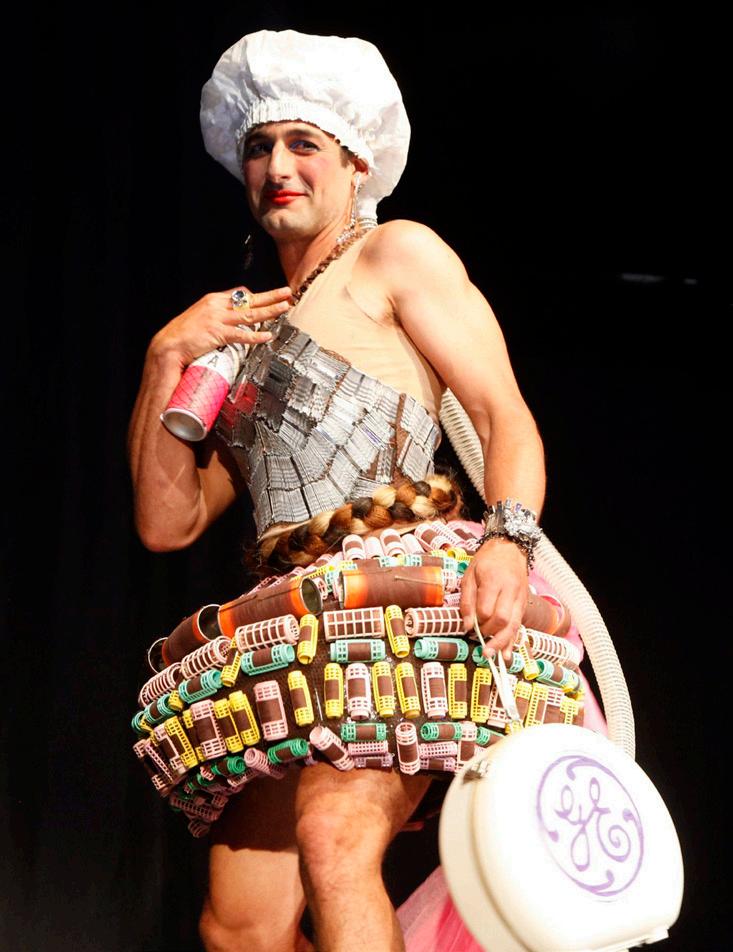



peplum floor-length gown with gold lace snaking up the left shoulder. She expressed her excitement to be a part of such a creative event.
“It’s an adrenaline rush for sure. I love seeing all the faces here,” she said about modeling. “I really like showcasing and showing people that you can create beauty. ”
Nearly everyone interviewed commented on the lack of an artistic vibe in San Jose. That is what Henderson and Sconberg are trying to change in the Bay Area.
“It’s just amazing how much creativi-
ty there is, if you just let people do it,” Sconberg said. “I was looking at all these designers, and was thinking, ‘All these designers actually live around here?’ ”
For Sconberg, a big purpose of the Art Party is to bring recognition to small designers in the Bay Area.
“What’s cool about this area is that there’s a lot of creative people. And a lot of people in tech, and that’s the easy option here, but a lot of people who are doing creative things don’t have a focal point,” she said.”
Her party, she said, was to create that focus.
Thirty years ago, when Perryn Reis sat in her high school self-defense class, she learned to always carry pepper spray, to use karate moves and to rip someone’s eye out with keys. She learned that “rape was just something that’s going to happen,” something inevitable, and that protecting herself could very well come in handy.
Now as a curriculum writer, Reis for the past 12 years has been working to send a different message: Sexual harassment is not a woman’s problem, it’s a cultural problem.
“It affects everyone,” Reis said. “We need to change the culture around sexual harassment, sexual assault and rape, and people of all genders are part of that.”
The story of a young woman raped by Stanford student Brock Turner sent shock waves across the country. The sentence -six months in county jail -- has not only drawn outrage on the internet, but it has also kindled a national discussion on a perceived “rape culture” and how it can be addressed.
“Sexual harassment is everyone’s problem,” said Yasaman Hakami, president and founder of the Women’s Empowerment Club at Homestead High School in Cupertino. “Regardless of age, status, sex, race, etc., when one of us is hurt, all of us hurt.”
Hakami founded the club at her school to raise awareness about the problems women face in the community and initiate conversations on how to better society.
“Any campus rape situation can be prevented when the correct implementation of educational courses are taught at school, not only at the college level but throughout each grade until the student completes his or her educational career,” Hakami said.
California lawmakers have, over the past two years, passed measures calling for an upgraded se education curriculum and the codification of what constitutes sexual consent.
In late 2015, Governor Jerry Brown signed into law the Affirmative Consent
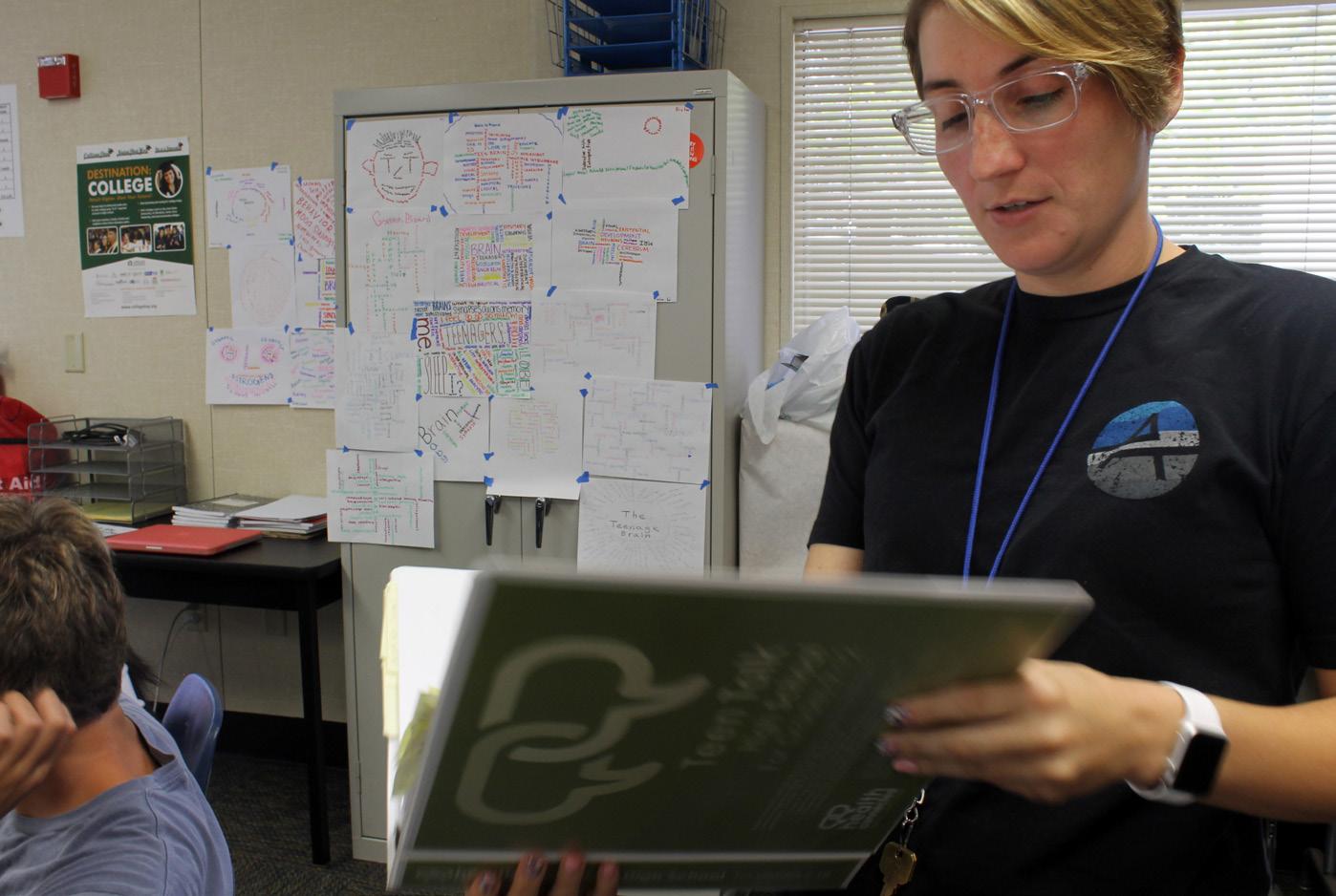
Act, which raised the consent standard from “No means no” to “Yes means yes.”
“‘Affirmative consent means affirmative, conscious and voluntary agreement to engage in sexual activity…. Lack of protest or resistance does not mean consent, nor does silence mean consent,” the bill states.
The new curriculum is set to be taught in classrooms beginning next school year.
In October 2015, just over a year after the “Yes means yes” bill, Assemblywoman Shirley Weber, D-San Diego, pushed the California Healthy Youth Act into law.
The law builds on the new consent standard and requires public high schools to modernize their sex education curriculum to include birth control and other contraceptives, pregnancy options, sexual decision making, abuse and assault.
“Education is by far the most important and statistically accurate way of preventing rape and sexual harassment,” Hakami said. “Children both male and female must be taught not to hurt each other and to respect each other’s boundaries.”
Although the California legislation has received much praise, there are those who believe discouraging teens from engaging in sexual activity is a better way to eliminate threatening sexual advances.
Ascend, an organization previously known as the National Abstinence Education Association, additionally sees the new
education requirements as “a step in the right direction” but encourages students to wait for sex until they are in a monogamous, faithful relationship.
“We think that the whole issue of consent should be broadened to really include a more holistic view of sexual activity and the advisability of a teen actually engaging in sexual activity,” said Ascend’s national director for state initiatives, Mary Anne Mosack.
Mosack said the organization strives to eliminate the risks of teenage sex, not just reduce it. She notes pregnancy, sexually transmitted diseases and a drop in academic performance as other consequences that teens who engage in sexual activity could face.
“We don’t want (teens) to interpret consent as a green light for sex,” she said. There are more things to think about than simply consent.”
As the implementation date rolls in this fall, districts are preparing material to meet the requirements of the California Healthy Youth Act.
To make these sex education lessons comfortable and engaging for both teachers and students, Health Connected, a nonprofit organization, has designeds an interactive sexual health curriculum for districts across California including Fremont Union High School District and Palo Alto Unified School District.
“This isn’t a topic that lends itself to big textbooks,” Reis said, “so it’s not just lecture based: There are group activities, role plays, coloring activities, poetry.”
Fremont Union High School District plans integrate the new curriculum into the existing sex education unit taught in freshman biology classes.
Trudy Gross, director of educational and special services for the Fremont Union District, said staff attended implementation training in March.
“We want to be giving our students very current information,” Gross said, “things that they’re hearing about, vocabulary that they’re hearing.”
She expressed her optimism and assurance that the new curriculum will encourage students to think through their actions.
“The fact that more topics are being covered and we’re giving more time for that … gives a little more opportunity for students to be thinking about it,” she said.
Unlike Fremont Union, Palo Alto Unified School District offers a required, semester-long Living Skills course, which covers health, drugs and sexual education, in its two high schools, Gunn and Palo Alto.
Janet Tucker, coordinator of the living skills summer school classes for the district, has been teaching the summer sexual health education classes for three years.
“A lot of people don’t want to teach sex ed; it is an uncomfortable topic for them,” Tucker said. The Health Connected book “Teen Talk,”she said, “does it all for you. They give you activities, pretests, posttests.”
Reis’s Health Connected sex education curriculum has found its way into classrooms across California, including Tucker’s, and her classes reach about 8,000 students each year.
When an anonymous freshman at Carlmont High School wrote a poem about consent in 2015, she knew that this education was indeed changing society’s views about rape. The poem reads, “So if you take it a bit further than a kiss, make sure that you remember this: if you and your partner go past third, make sure that a ‘yes’ is heard!”
As Common Core standards kick in, debate rages onBy Emily Luong Mosaic Staff Writer
Bud Harrington, a retired English teacher from the East Side Union High School District, was known for unique classroom activities such as ghost storytelling in a darkened theater, analyzing songs from his Simon & Garfunkel playlist and putting together a personal magazine.
While other teachers focused on getting their students to meet standards, Harrington said he made an effort to enhance students’ creativity, cultural appreciation and enthusiasm for learning. His classroom relied on a relaxed, bean bag-filled atmosphere with “assignments that allowed for low-achieving, high-risk students to enjoy learning and to stay in school,” he said.
“School should never be about making mindless working robots out of human beings,” Harrington said. “While students need the technology and the ability to adapt, they should never be deprived of learning sweeping lines from Shakespeare or admiring the subtle colors that Michelangelo used when painting the Sistine Chapel.”
California schools have slowly been implementing Common Core standards, which are meant to ensure that students are ready for life beyond high school. The standards focus on collaboration and the development of verbal communication skills to prepare students for college and career.
But while most educators have embraced the standards, Harrington does not believe these standards are beneficial to students. He is in the minority among teachers and administrators recently surveyed by WestEd, a nonprofit organization working with education.
The study, conducted earlier in the year, reported that “56 to 92 percent of teachers and administrators believe that the new
standards are more rigorous than previous standards, that the standards make learning more relevant to students’ everyday lives, and that the standards will positively impact the degree to which students are prepared for college and careers.”
Bernadette Marcias, a sixth-grade teacher at San Jose’s Carolyn Clark Elementary School, numbers among the majority of teachers who support the shifts in language arts, explaining that “it comes down to making sure your students have the skills to be in the real world. I want to make sure when a student leaves my classroom, they can express their ideas without being afraid, that they can be a leader.”
However, she acknowledged potential drawbacks to the focus on collaboration and discussion that comes with the new standards.
“Students without the vocabulary and verbal and writing skills can be seen as not being a team player because they don’t have the basics and cannot participate in higher-level discussion groups,” Marcias said.
Concern for students who struggle with the basics of reading and writing is common among teachers and administrators. In order to support them while still maintaining the rigor of the standards to which students are held, teachers must implement differentiated instruction, teaching to meet each student’s needs.
“Teachers have to know their kids, know what they need, and also never make kids feel like they’re less than someone else,” said Marilyn Goldsmith, who has taught for 31 years at San Jose’s Millbrook Elementary School. This kind of differentiated instruction is time-intensive and requires professional development for teachers, the WestEd study reported.
Administrators recognize the need for professional development but remain positive, in line with the findings of WestEd studies.
“Common Core language arts has al-
ways been a work in progress, but parent criticism was less than that of math, because the shifts for language arts weren’t as big,” said Leila Welch, principal of Matsumoto Elementary School in South San Jose.
According to Denise Williams, director of categorical programs for the city’s Evergreen Elementary School District, students have responded favorably to shifts in the teaching of language arts, “enjoying their learning because it is so nontraditional.”
In high schools, however, negative responses have been more emphatic.
“Common sense works for me. Common Core doesn’t,” Harrington said.
“Now, we are seeing a trend that sits
highest levels, respectively, of English taught in high schools. She has seen both simplistic and grandiose writing. In her opinion, “Common Core is more focused on structure, rather than style. Setting standards simply based on correct structure and development of ideas puts students at a C-level performance.
“If kids grow up analyzing literature indepth since elementary school, it raises the standard for the AP level. I want my AP students not to meet the standards, but to beat the standards,” Devincenzi said. However, she also worries that “holding elementary-school students at too-high of standards for speaking, writing, and reading will contribute to a loss of enthusiasm for literature” that may affect students’ in-
“I want to make sure when a student leaves my classroom, they can express their ideas without being afraid, that they can be a leader.”
— Bernadette Marcias, a sixth-grade teacher
on the precipice of replacing great works for unknown, or worse, banal writing,” he said. As an English teacher, this was one of his major concerns regarding the new curriculum, which focuses on expository, technical writing as opposed to literature. Some teachers are concerned not only about what they describe as mediocre reading material, but also its effects on students. Some worry that by focusing only on structure, students will miss out on developing a more nuanced use of language.
Nicole Devincenzi teaches English 1 and AP Literature at Evergreen Valley High School, which are the lowest and
terest in taking AP English courses in high school.
Teachers from both ends of the K-12 schooling system concurred, professing similar concerns.
Goldsmith, the veteran Millbrook Elementary teacher, summarized many teachers’ sentiments. “I hope the kids still love learning,” she said. “There should be joy, and there needs to be balance. Constantly explaining what you’re thinking really challenges your brain, so as a teacher I want them to grow as learners, but I also want them to have a lifelong love of learning.”
With white tents filled with local entrepreneurs and organizations, mics set up for performances, and children running around Discovery Meadows Park, preparations for the 35th annual San Jose Juneteenth Festival were well underway.
The event honors June 19, 1865, the day Union soldiers in Galveston, Texas, announced the emancipation of African-American slaves. News of freedom arrived 2½ years after President Abraham Lincoln’s Emancipation Proclamation.
Today many treat this holiday as way to embrace their culture and appreciate the freedom that their ancestors fought for.
The 35th anniversary theme was “Heritage Matters: A Multicultural Connection Celebration.” Organizers aimed to bring the community together through small local businesses and organizations.
A local Wells Fargo team stood behind a stage coach encouraging bystanders to dress up and take photos for social media, with the hashtag #stagecoach, using social media to reach a wider audience. Local Wells Fargo manager Clarence Bandy said, “A company is only as strong as
the community behind it.”
Many of the organizations supporting the event aimed to expose their messages to the community. One message in particular was female empowerment.
Diva Pro Defense, an Elk Grove company that promotes female self defense classes and products, hoped to educate women on how to defend themselves in unsafe situations. Their booth was busy all day long as they gave stun gun demonstrations and showed off their sparkly products, which included stun guns disguised as lipstick containers and curling irons.
Diva representative Julia Spencer said, “We educate women in defense, and we empower women with our products that aren’t intimidating them.”
The Eta Rho Omega Chapter of Alpha Kappa Alpha Sorority in San Jose caught the public’s attention with their outgoing personalities, bright signs and pink flowers. The sorority promotes health, education, academic achievement, environmental ownership and global impact through community service.
The sorority was established in 1908 at Howard University with the goal of educa-
tion and healthy sisterly relationships.
Sorority representative Pamela Lowe said, “Our goal is to spread service to all mankind and continued education celebration and to learn the history of African-Americans in the U.S.”
The San Jose Chapter of Delta Sigma Theta Sorority. has outreach programs for teenage girls. The members of the sorority have acted as mentors to over 800 African-American girls in 22 years.
Mentor Donna Simons said, “We mentor girls ages 13-18 once a month, September through March. The girls learn things like leadership skills, relationship advice, communication skills and positive self-image.”
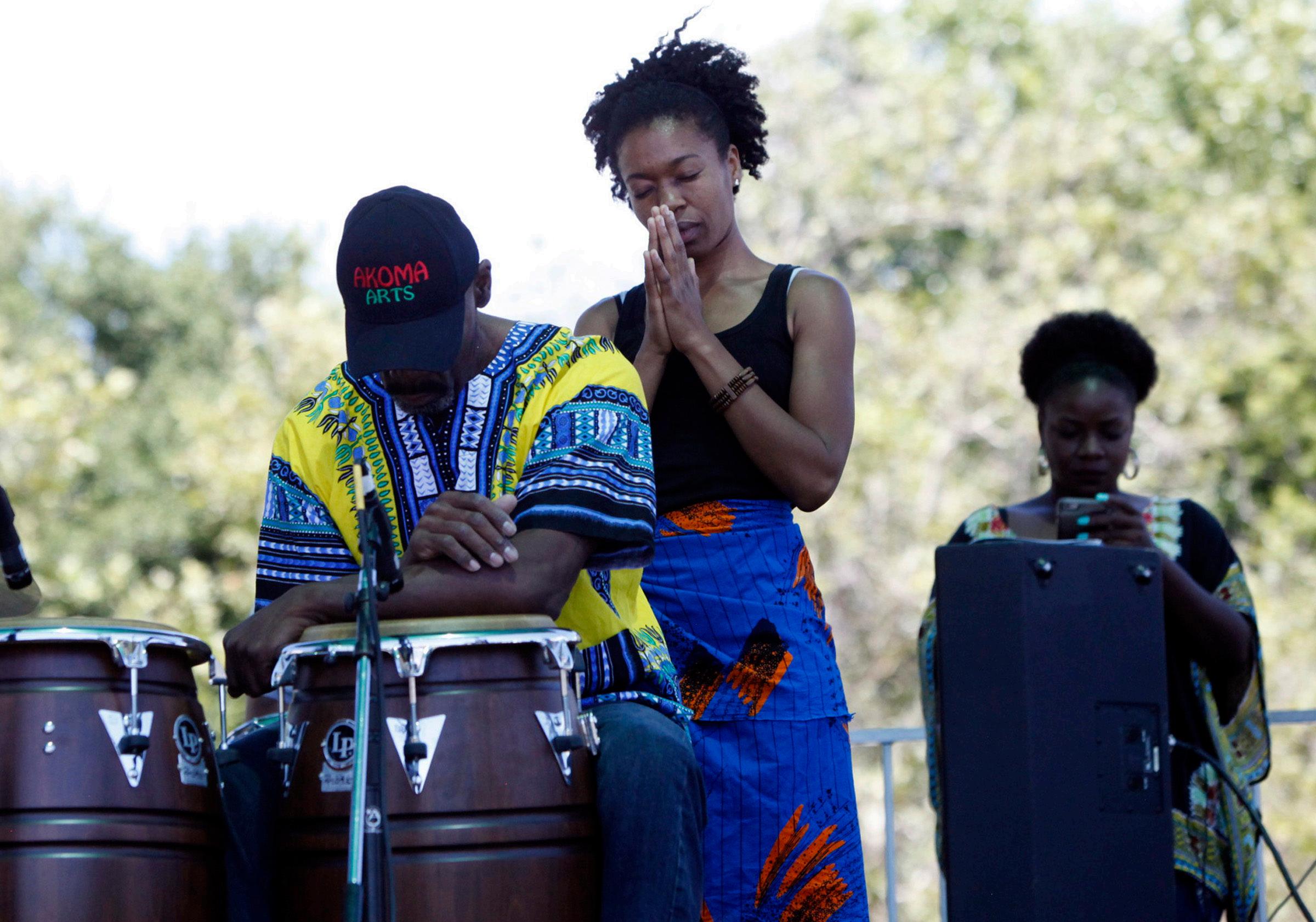
The number of businesses owned by African-American women in the Bay Area -- and the United States — has been soaring, according to a new government report.
In San Jose alone there are a number of such businesses, including the Black & Brown thrift shop, Lillie Mae’s House of Soul Food, Strictly Styles Salon, Krazy Komb and others.
In fact, the number of such businesses in the United States has more than tripled since 1977 to 1.9 million, according to the U.S. Census Bureau’s 2012 Survey of Business Owners, released last December. Of those, about 12,000 are in the Bay Area counties of Santa Clara, Alameda and San Francisco. Few other groups of minority women are starting businesses at a faster clip, according to the report, which is updated every five years.
While this may seem like a highly encouraging trend, a deeper look at the data -- especially revenue, and the reasons many of these women go into business in the first place -- suggests things may not be quite so rosy.
Anita Gardyne, CEO of Oneva, an East Bay firm that provides specialized inhome and on-the-go health care services, is one of those who have decided to invest in herself. After losing a senior position in a corporate setting during the recession and finding it hard to get another good job, Gardyne thought about how she could take care of herself and her family by launching her own business.
Previous generations of black women couldn’t even dream of starting their own business, she said, so times have changed. It’s not so easy, and black women face special obstacles. But with enough persistence, determination and skill, it’s not impossible.
“It’s a great time to be a black woman CEO; it’s the best time in history,” she said. “It’s still hard, but it’s the best time. I am in control of my own destiny.”
She recalls coming away from meetings with potential investors wondering why one person’s business attracted capital and hers didn’t. “I see deals that I think
are unfair, but I stay out of it,” she says with a rueful laugh. “It’s like trying to get in between someone’s marriage. You just don’t do it.”
It doesn’t get much easier for black women who own their own businesses once they get started. “We have to be twice as fast and twice as good,” she said. “What other people get a dollar to do, we have to figure out how to do the same thing with 67 cents.”
Indeed, black women may be the fast-growing segment of entrepreneurs, but the U.S. Census Bureau noted in its 2015 report that those businesses tend to be among the smallest and derive the least amount of revenue. Between 2015 and 2016 average revenue fell from almost $40,000 to about $26,600, according to “The State of Women-Owned Businesses,” an annual report by American Express Open. Also, few of them employ others to help them run their businesses.
In many ways, black female entrepreneurs are determined to fill a neglected niche. Efiya Asabi, owner of Iyoba Body Essentials, a small cosmetics business in Oakland said, “I was tired of big corporations selling us products that don’t work for our skin.”
She started a line of organic soaps after store-bought creams inflamed her daughter’s eczema. “We are trying to live as clean as possible,” she said.
Asabi talks about the history of economic life in the black community, and how the recession left so many with no choice but to fend for themselves.
“It is a legacy in African-American culture to make ends meet,” she said.
“Using the skills we inherently have to earn profit dates back centuries ago, but the depression was definitely a wake-up call for many.”
In 2007, business launches were declining because of the recession, causing employment to be scarce. However, “Between 2007 and 2016, the number of African-American women-owned firms increased 112 percent,” the American Express Open report said.
As Margot Dorfman, chief executive officer of the U.S. Women’s Chamber of Commerce, said in an interview with Fortune magazine in 2015: “We attribute
Milan R. Balinton, executive director of the African American Community Service Agency that hosted the event, said the festival is an opportunity to promote equity in multiple ways.
“This event is about freedom, and freedom is about breaking barriers, having that opportunity in front of them and reaching a larger portion of the community,” Balinton said. “Juneteeth is about finding freedom whether it be financially, with mental health, or with equal opportunities.”
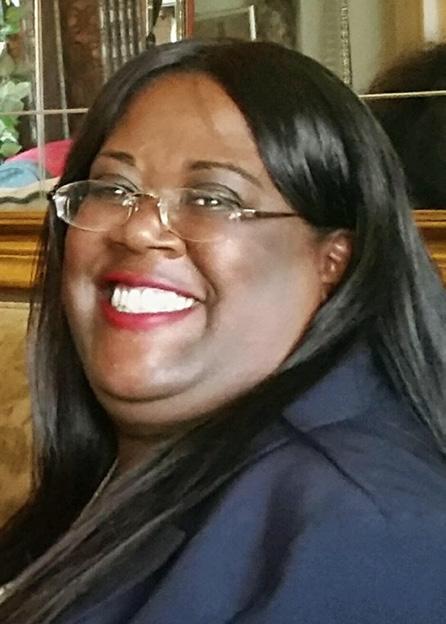
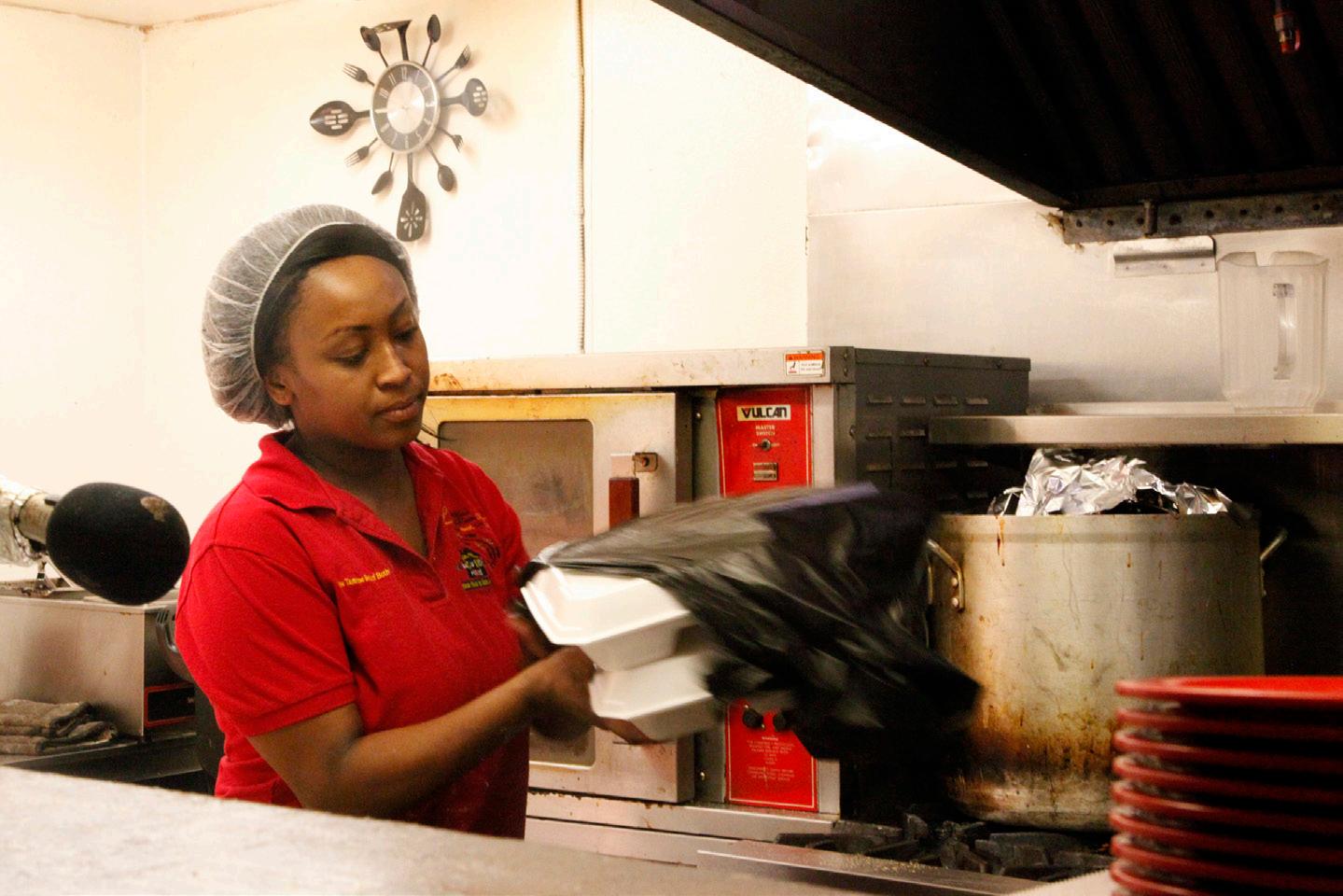

“If you take the women out of it, ev-
stops,” Wilson said. “They’re nat-